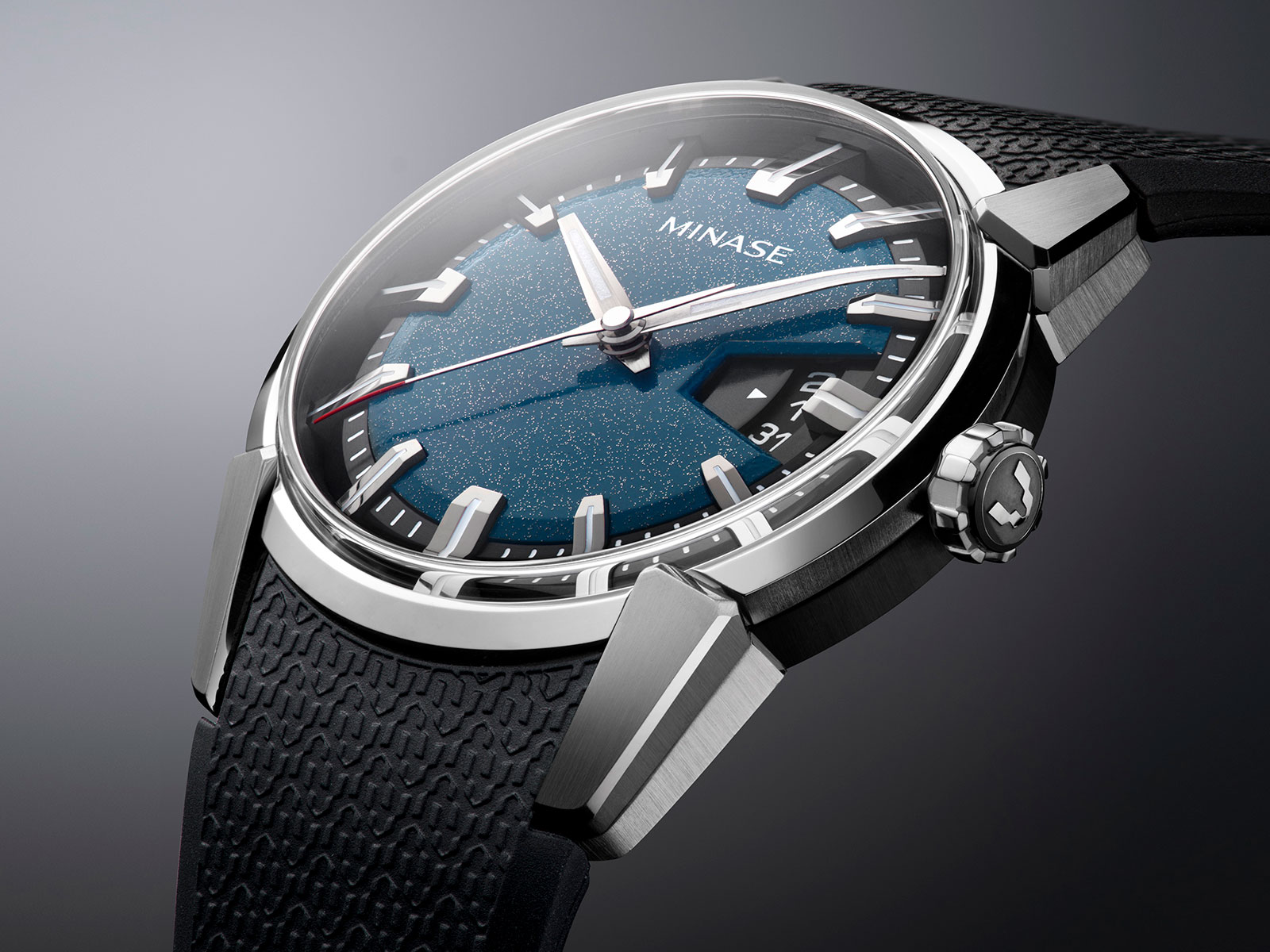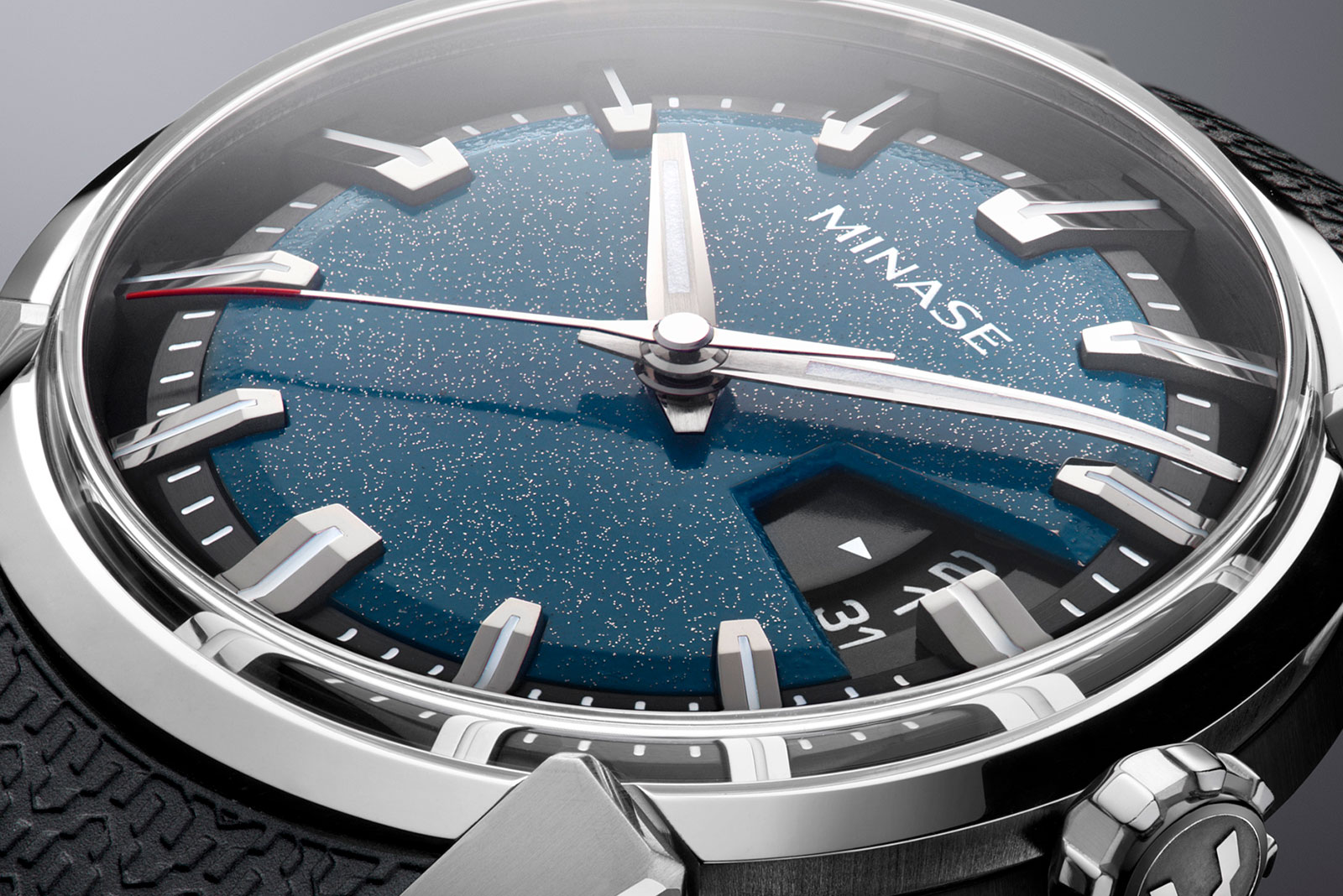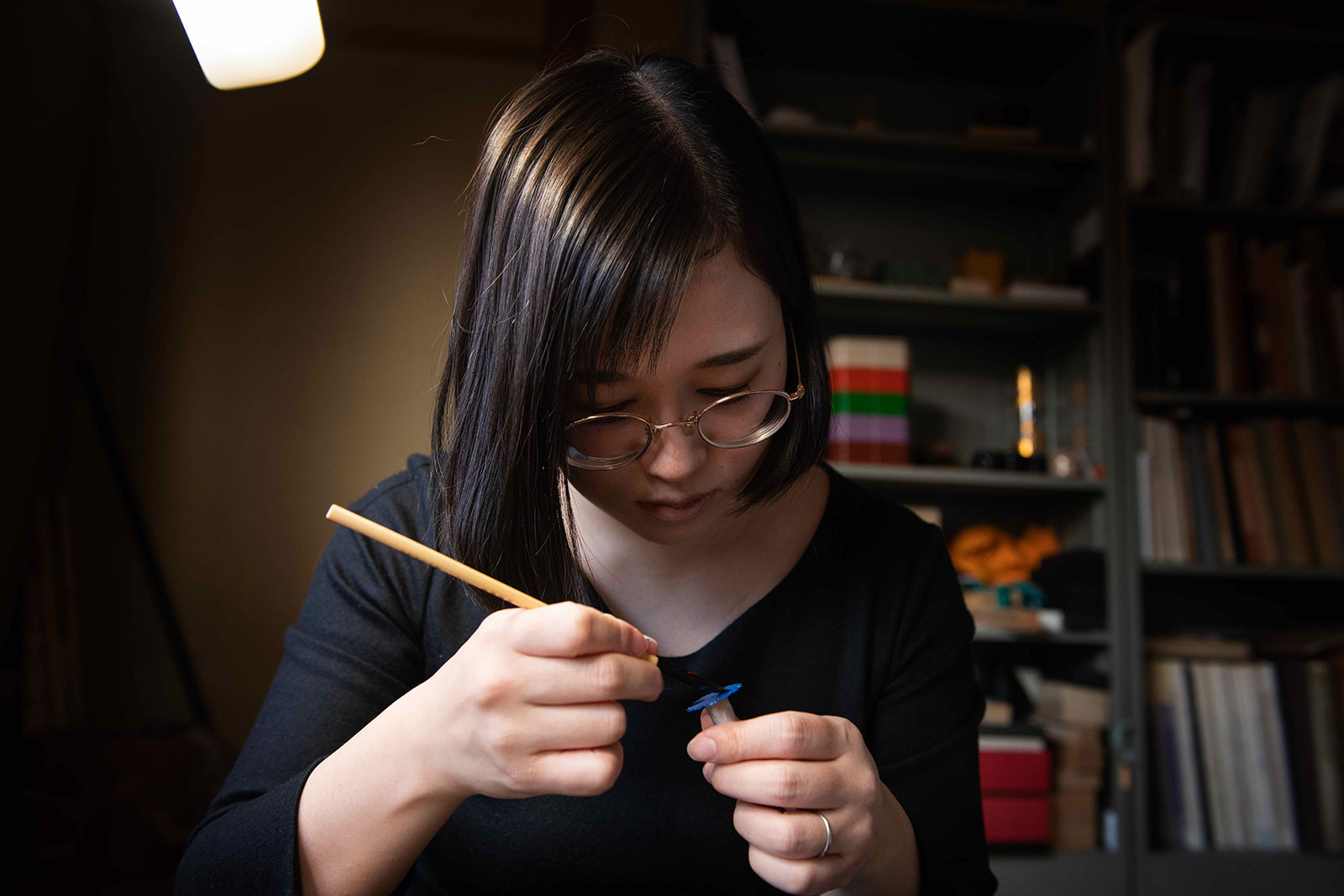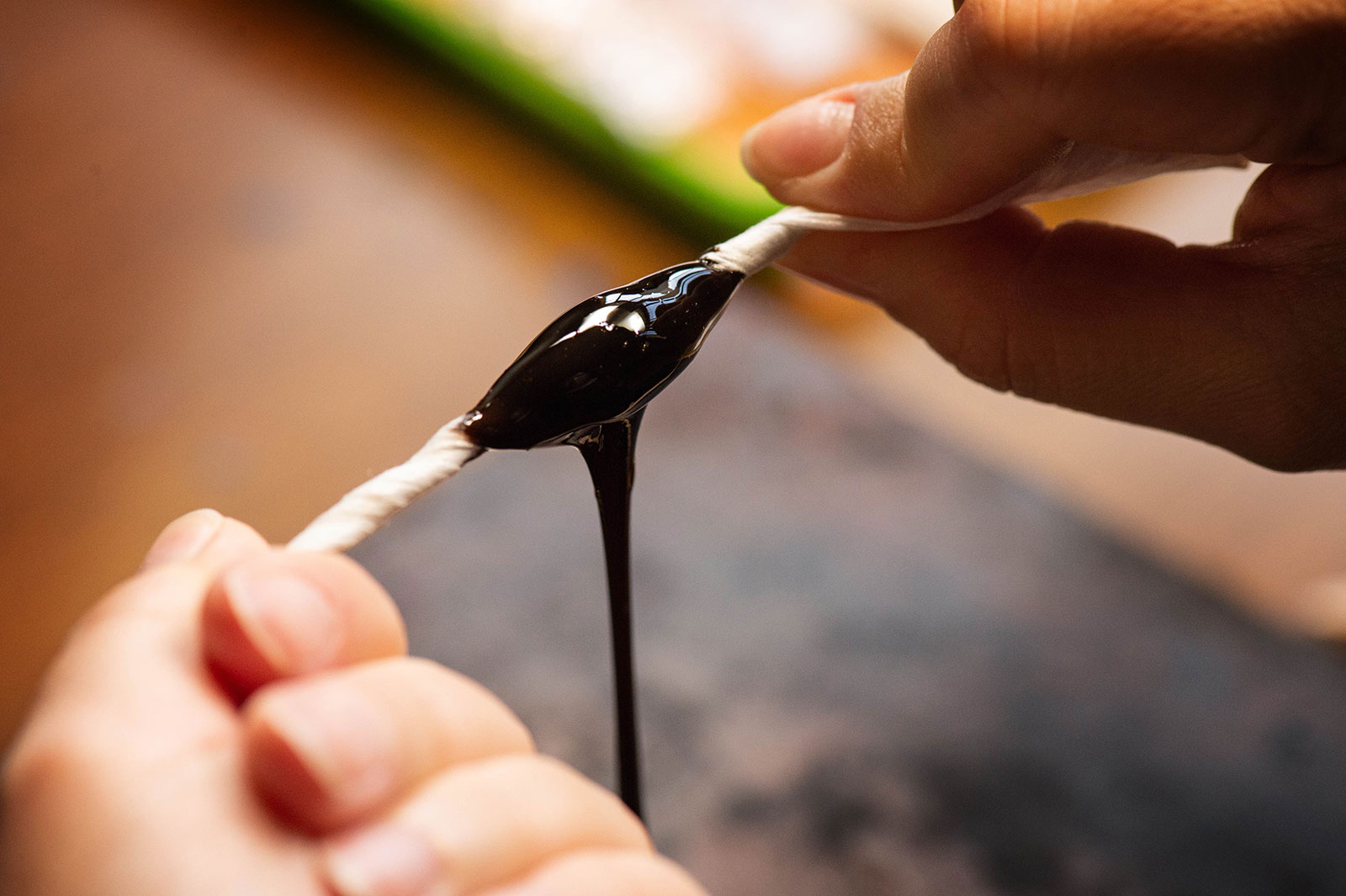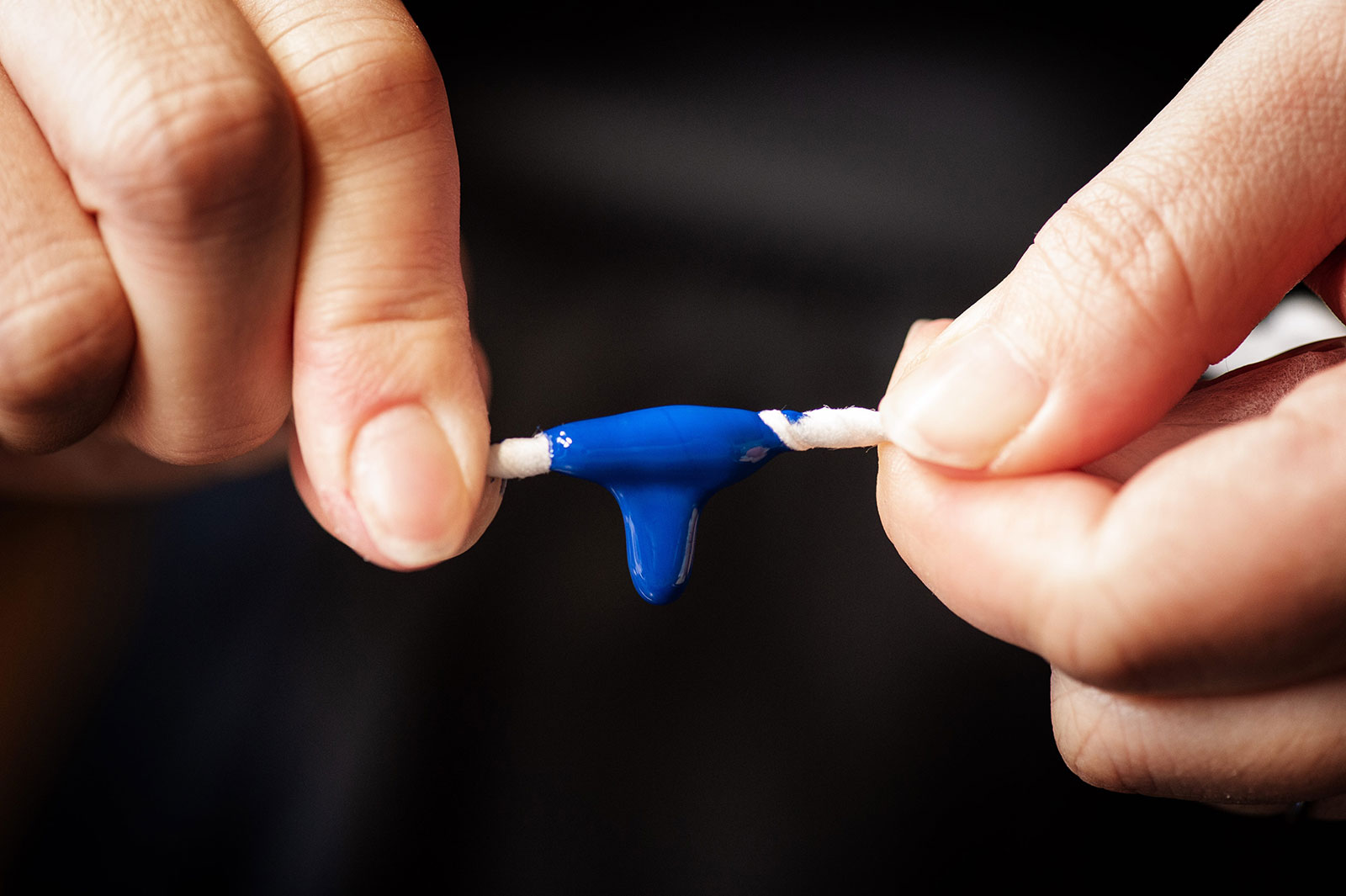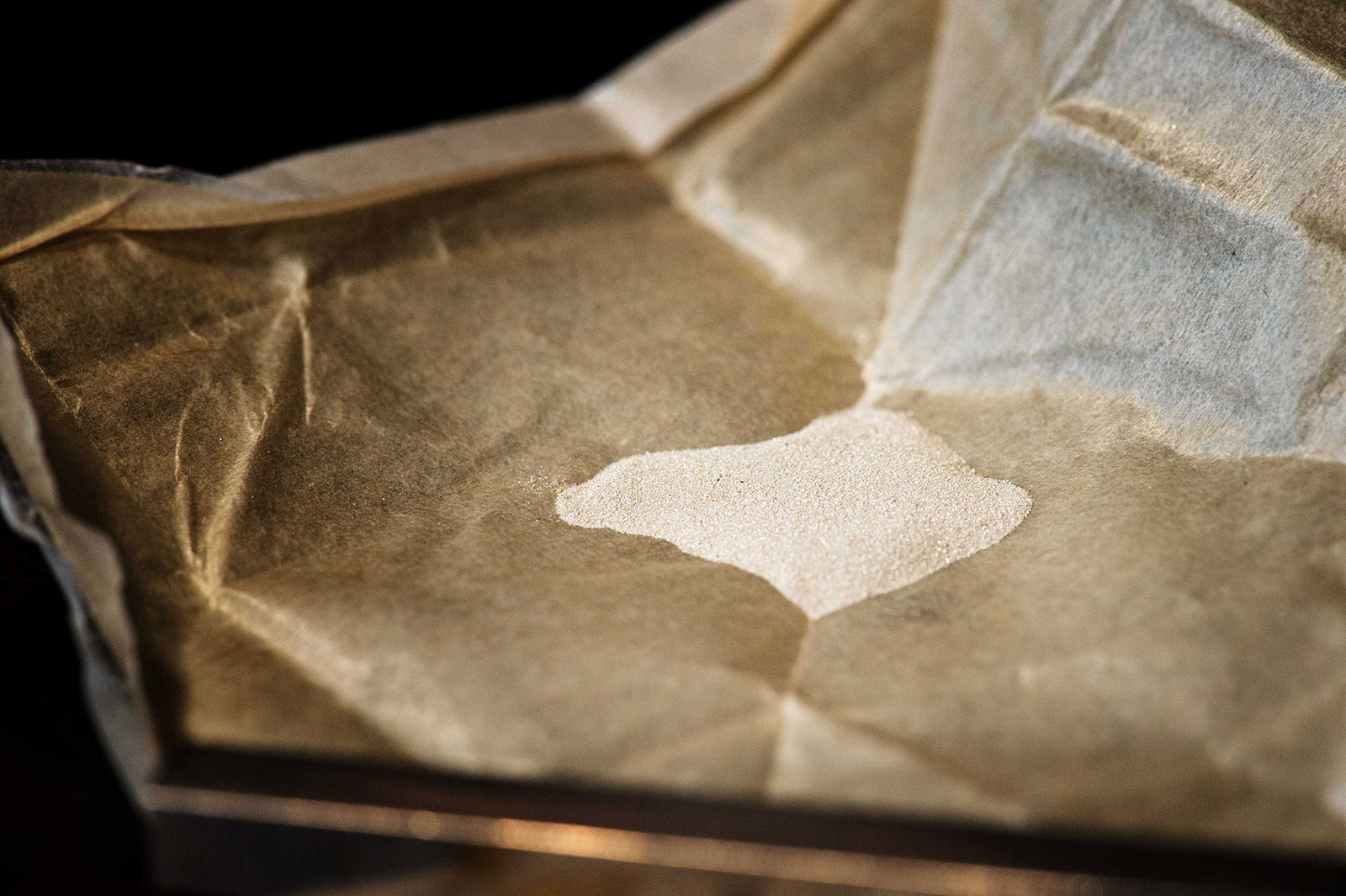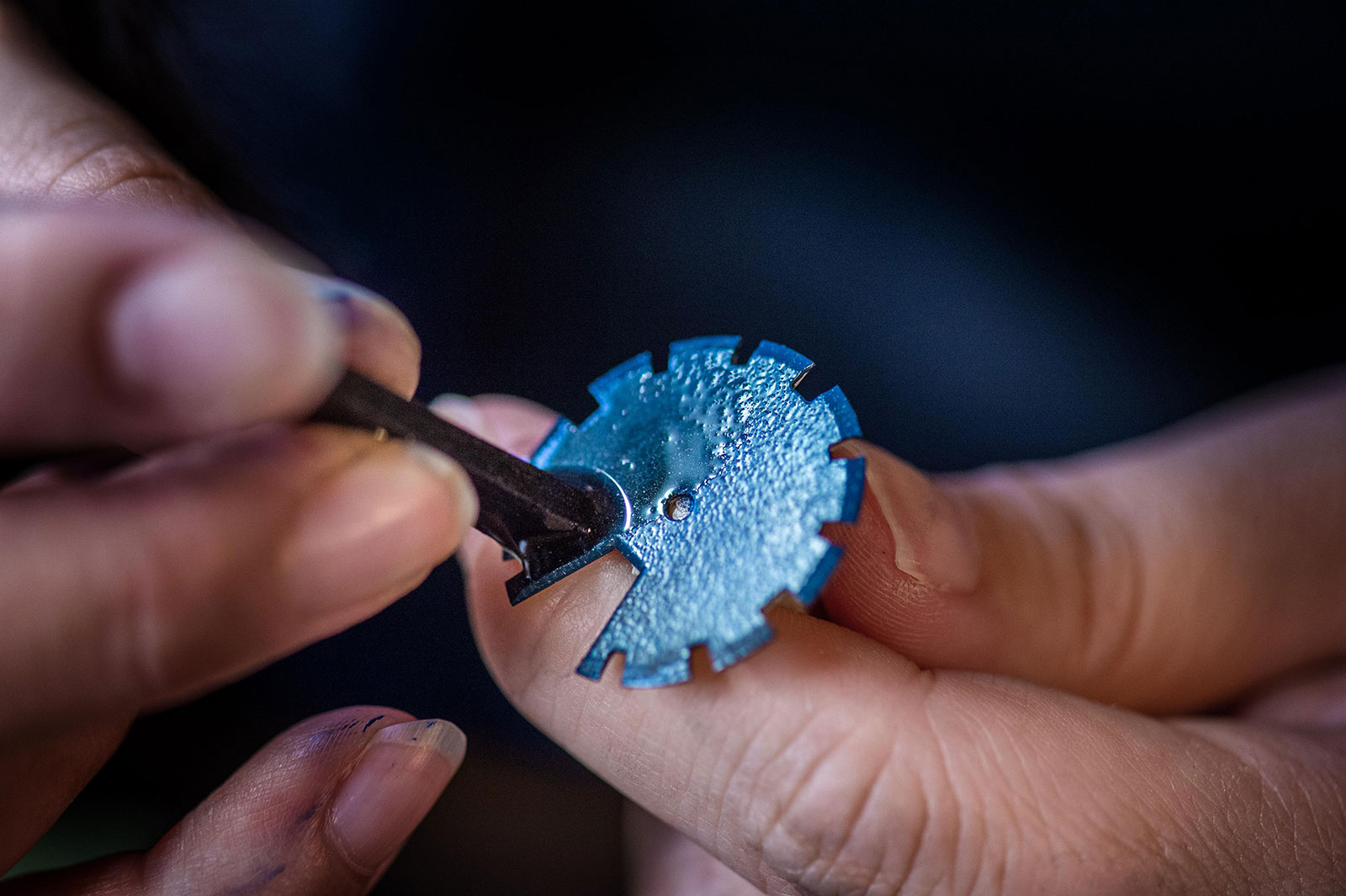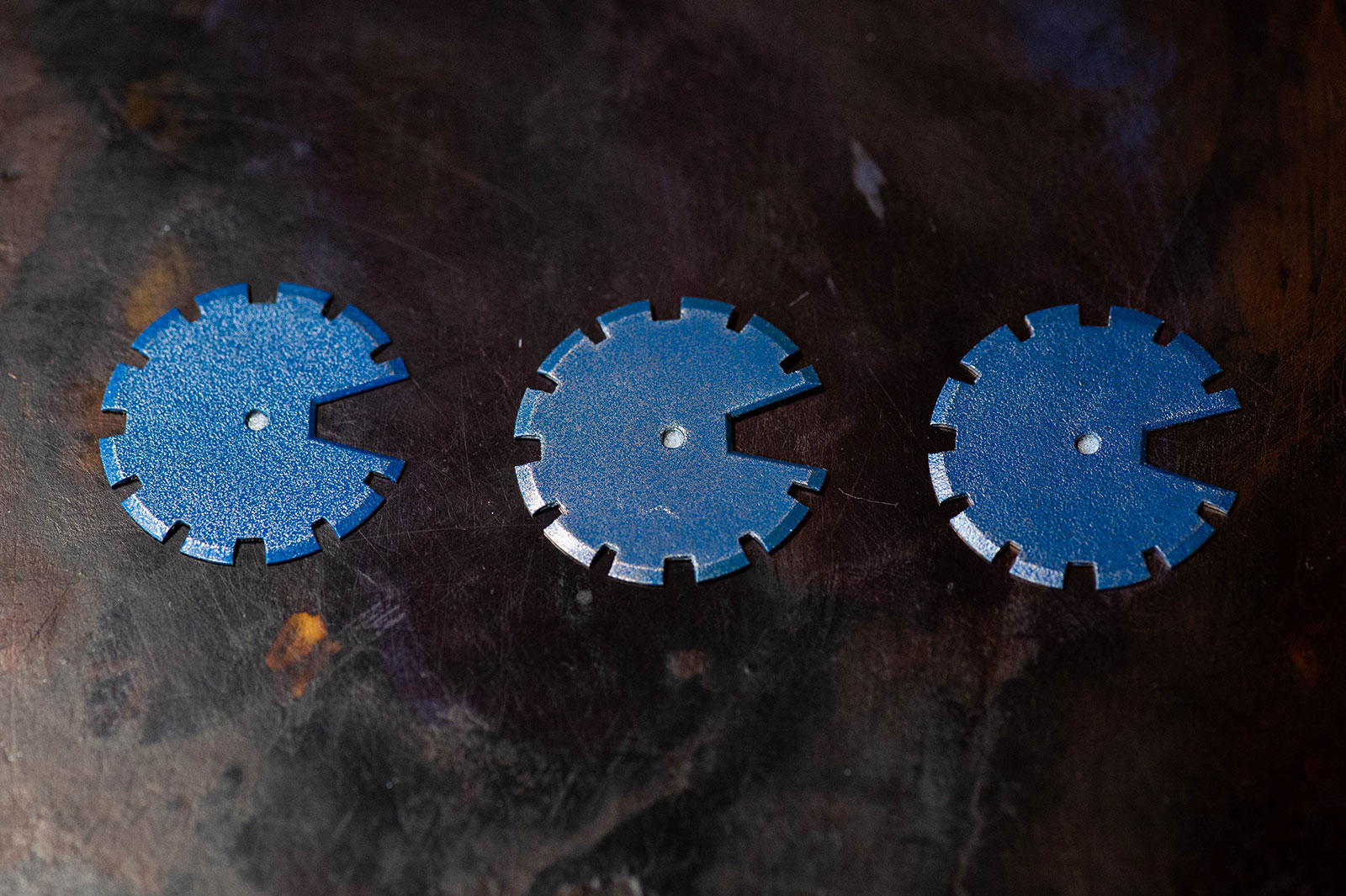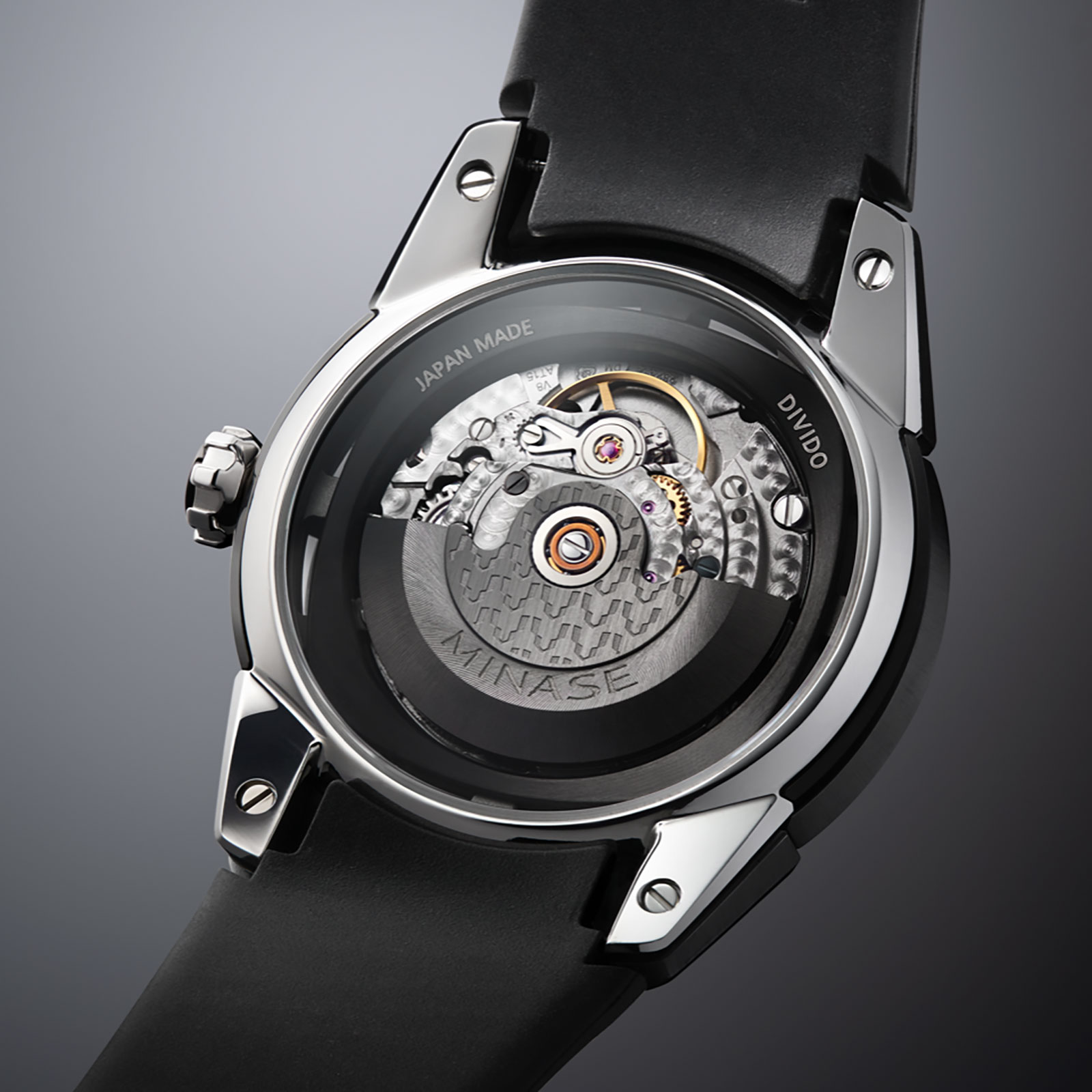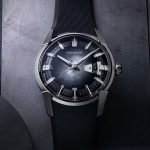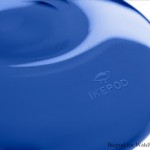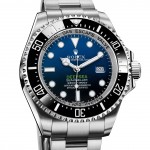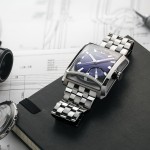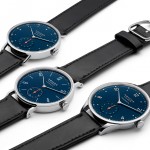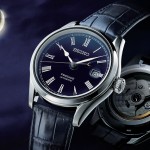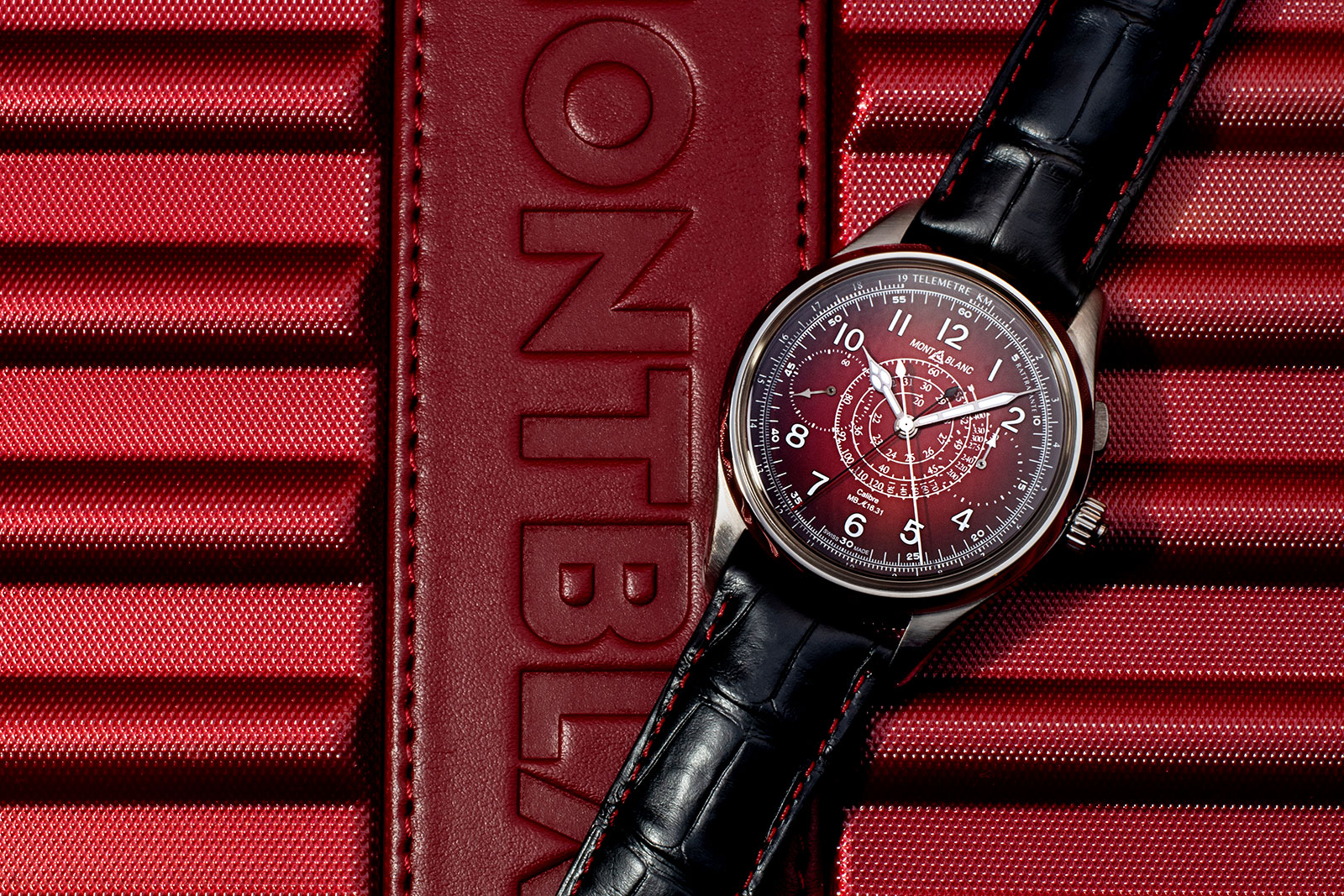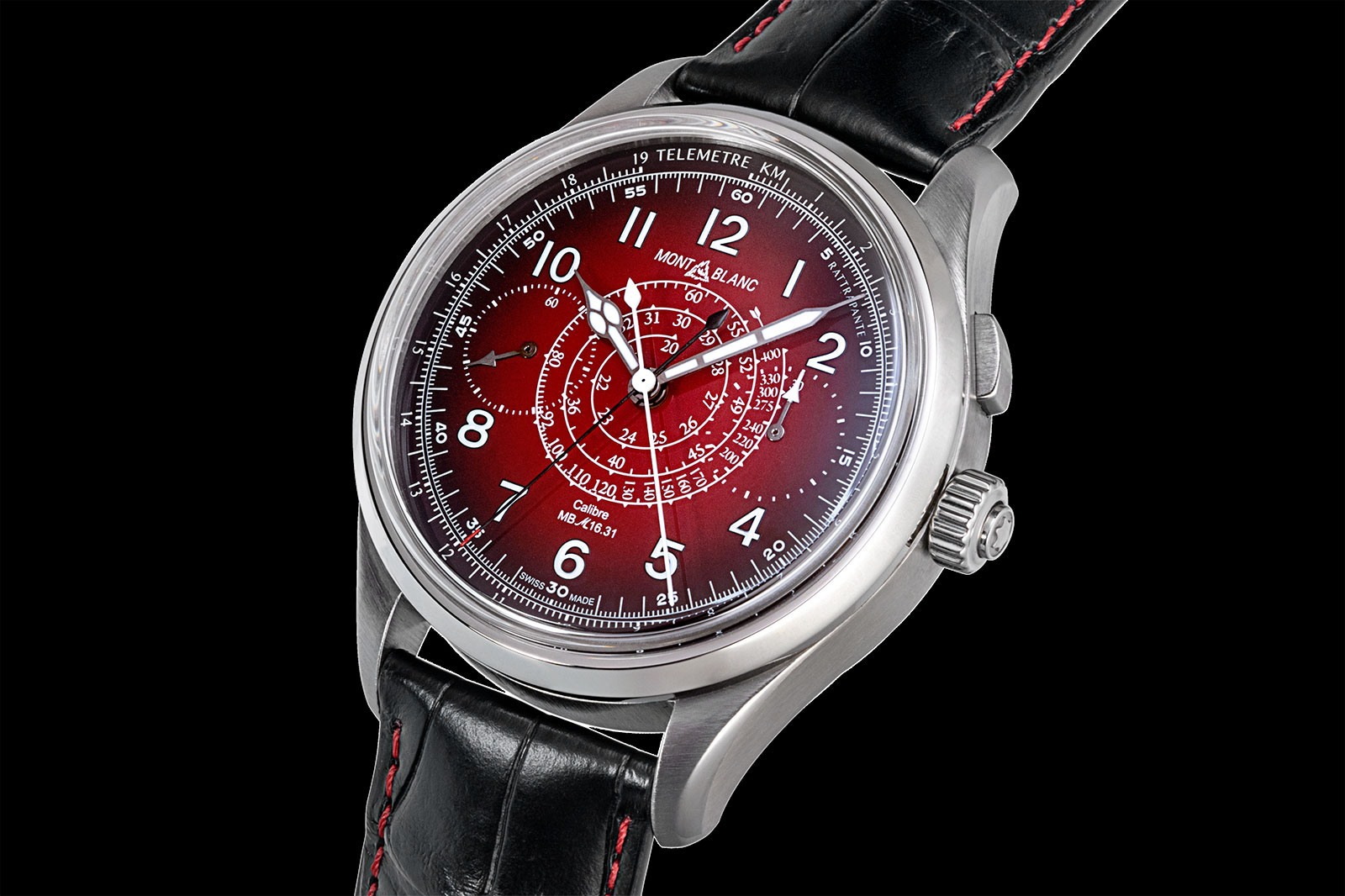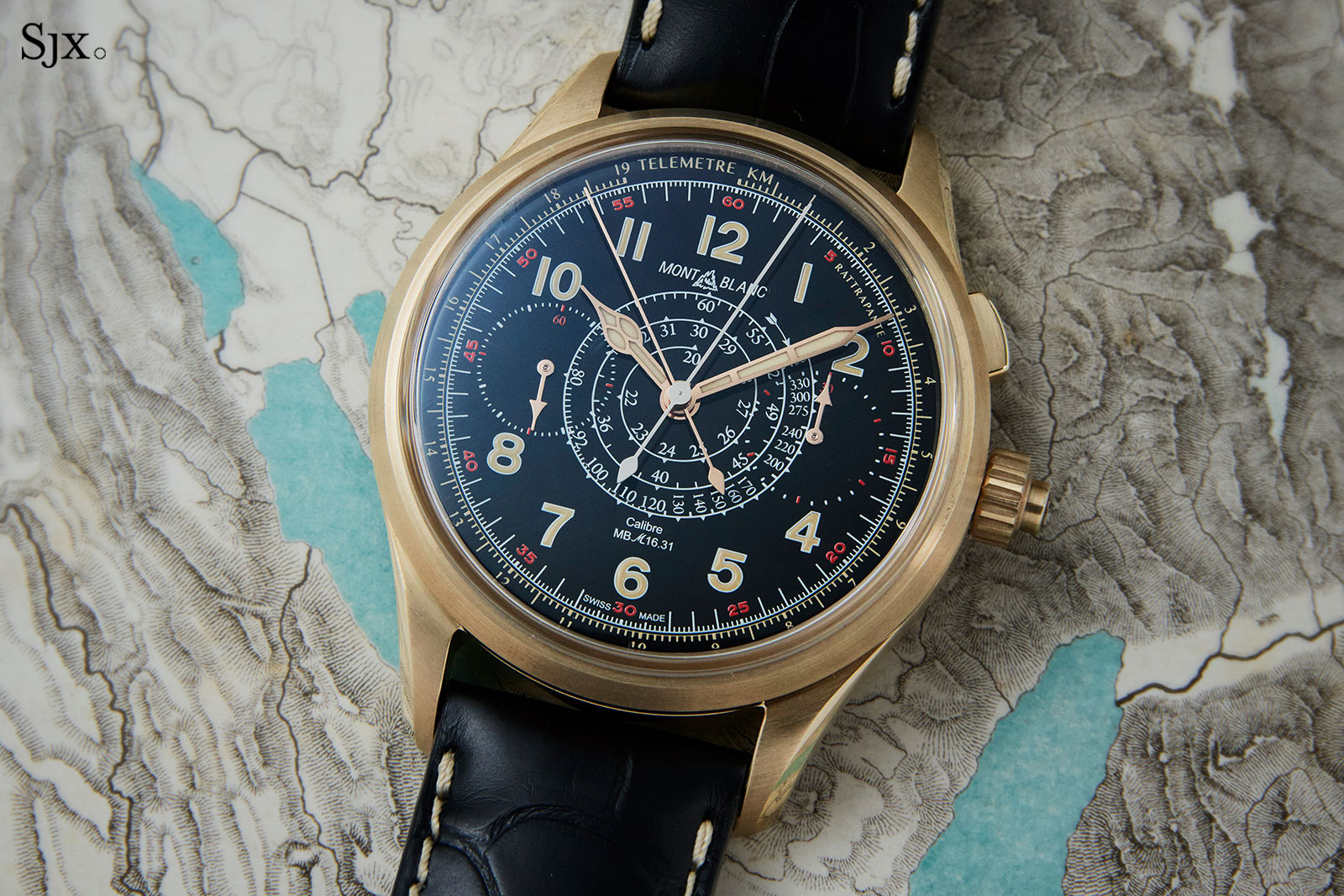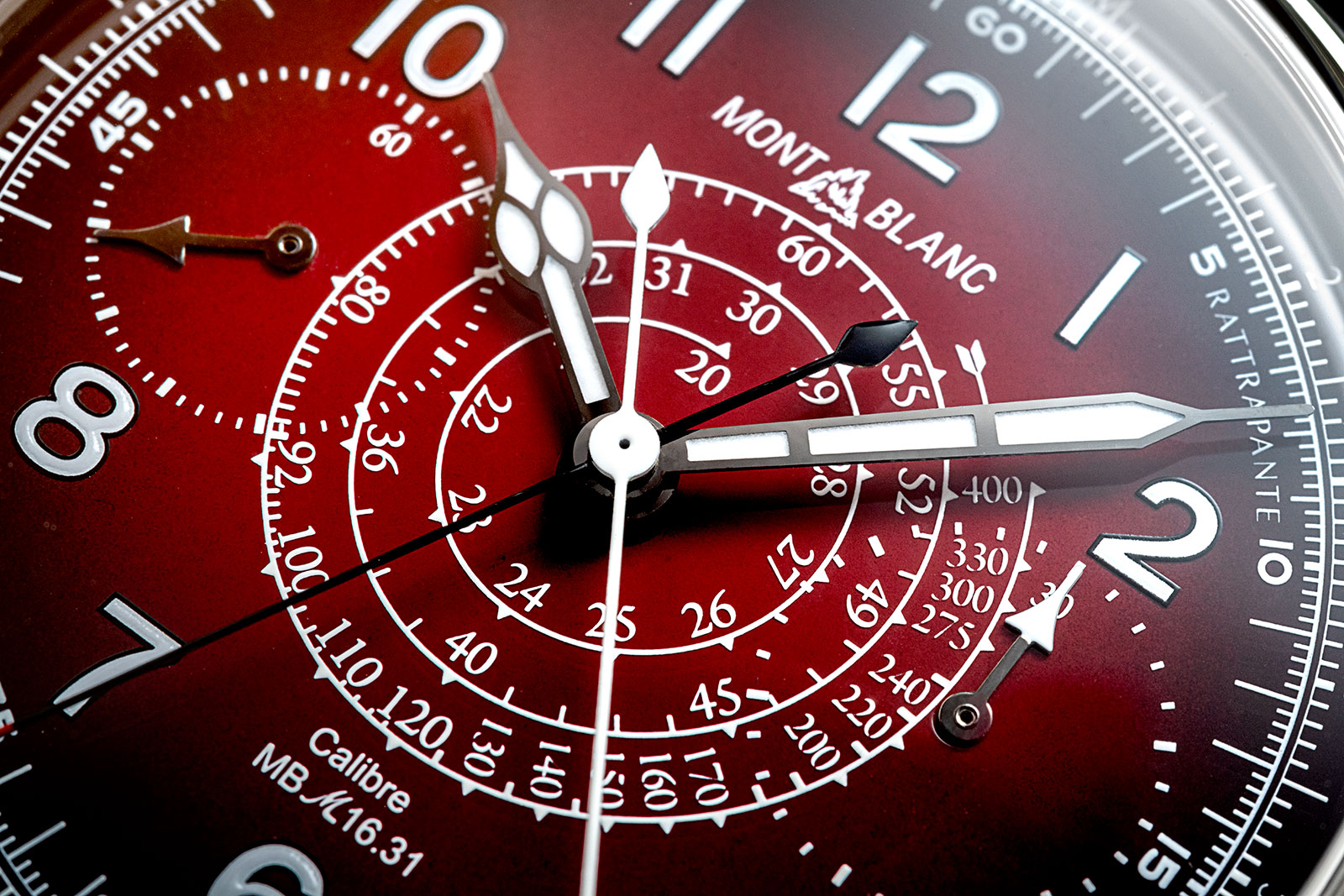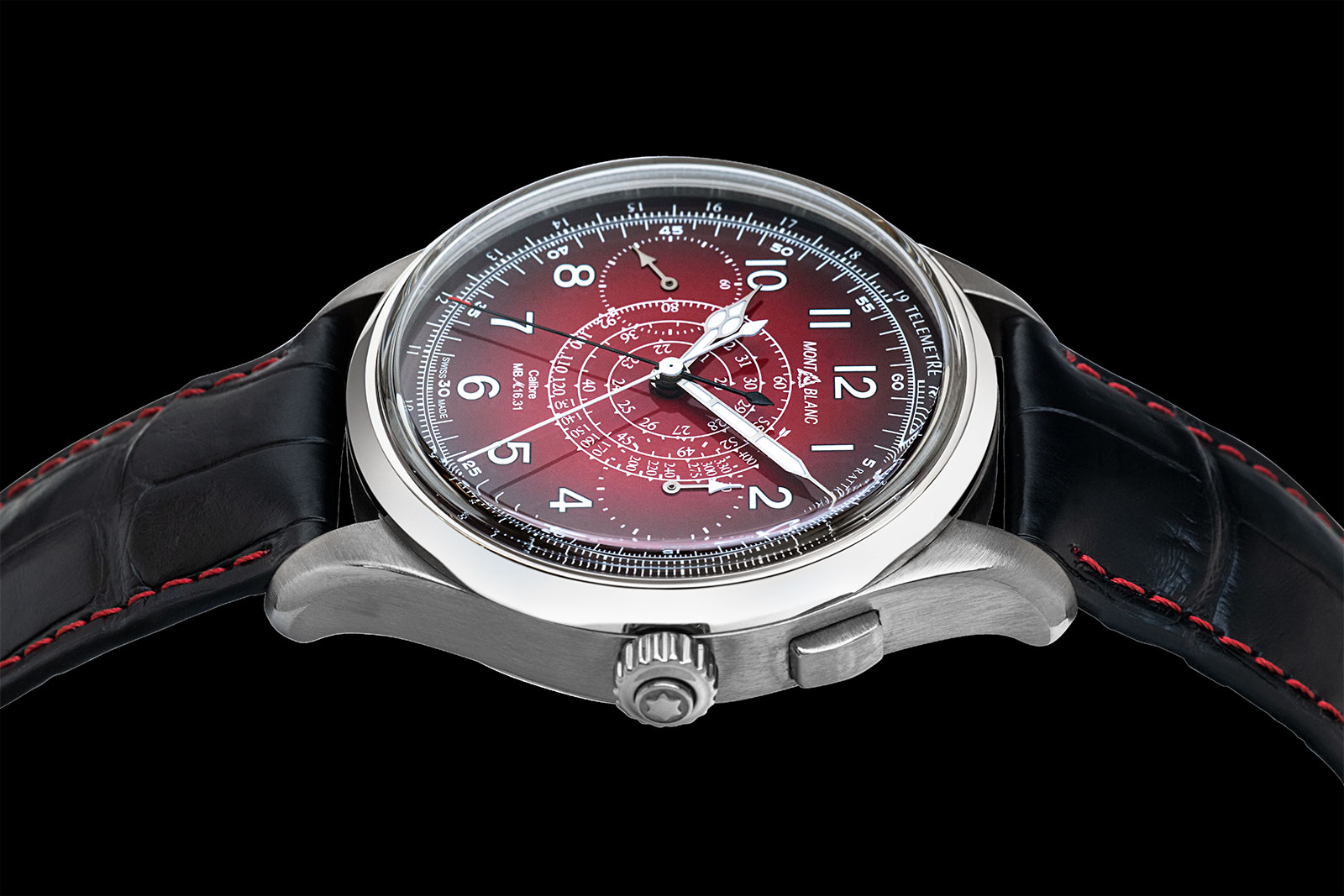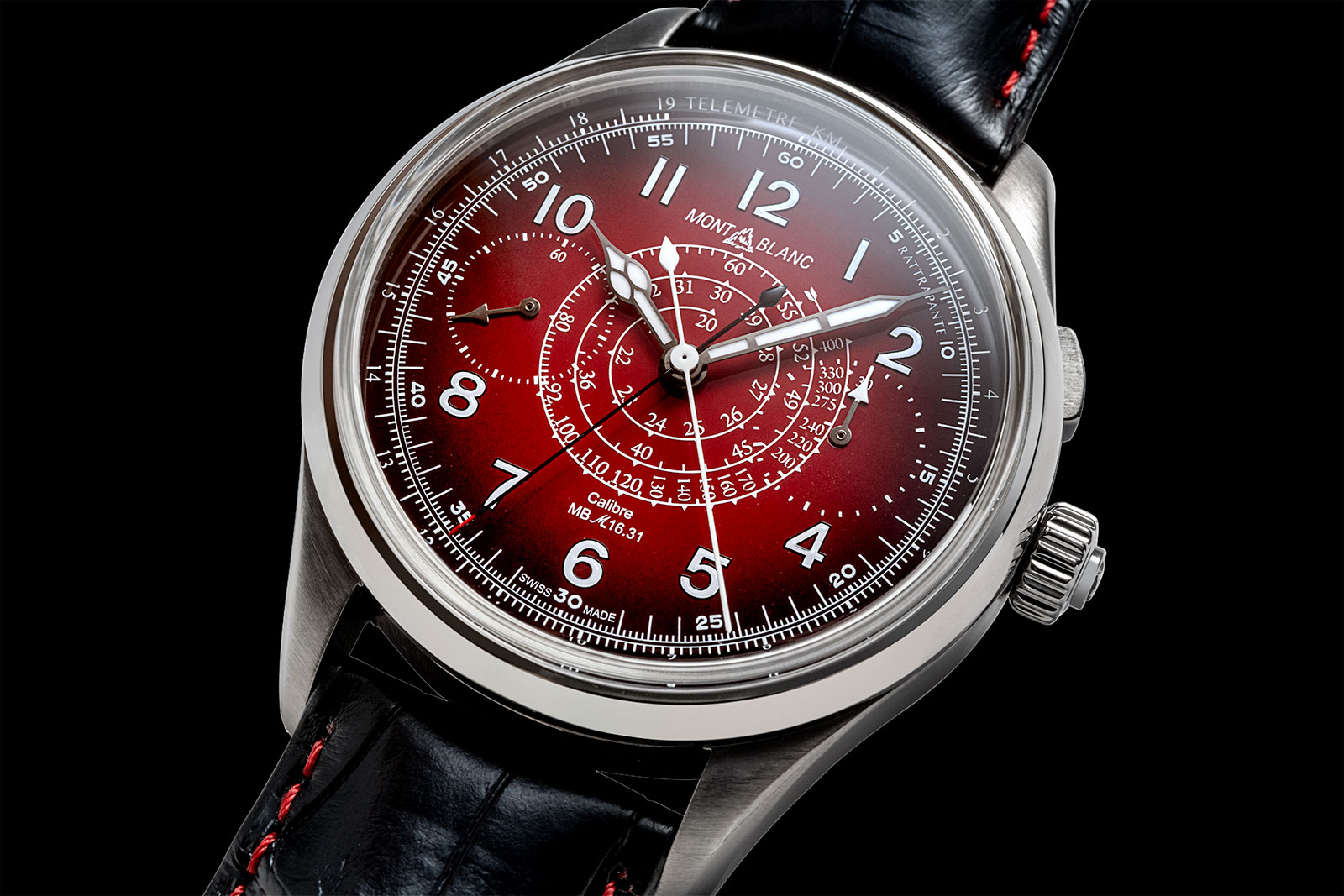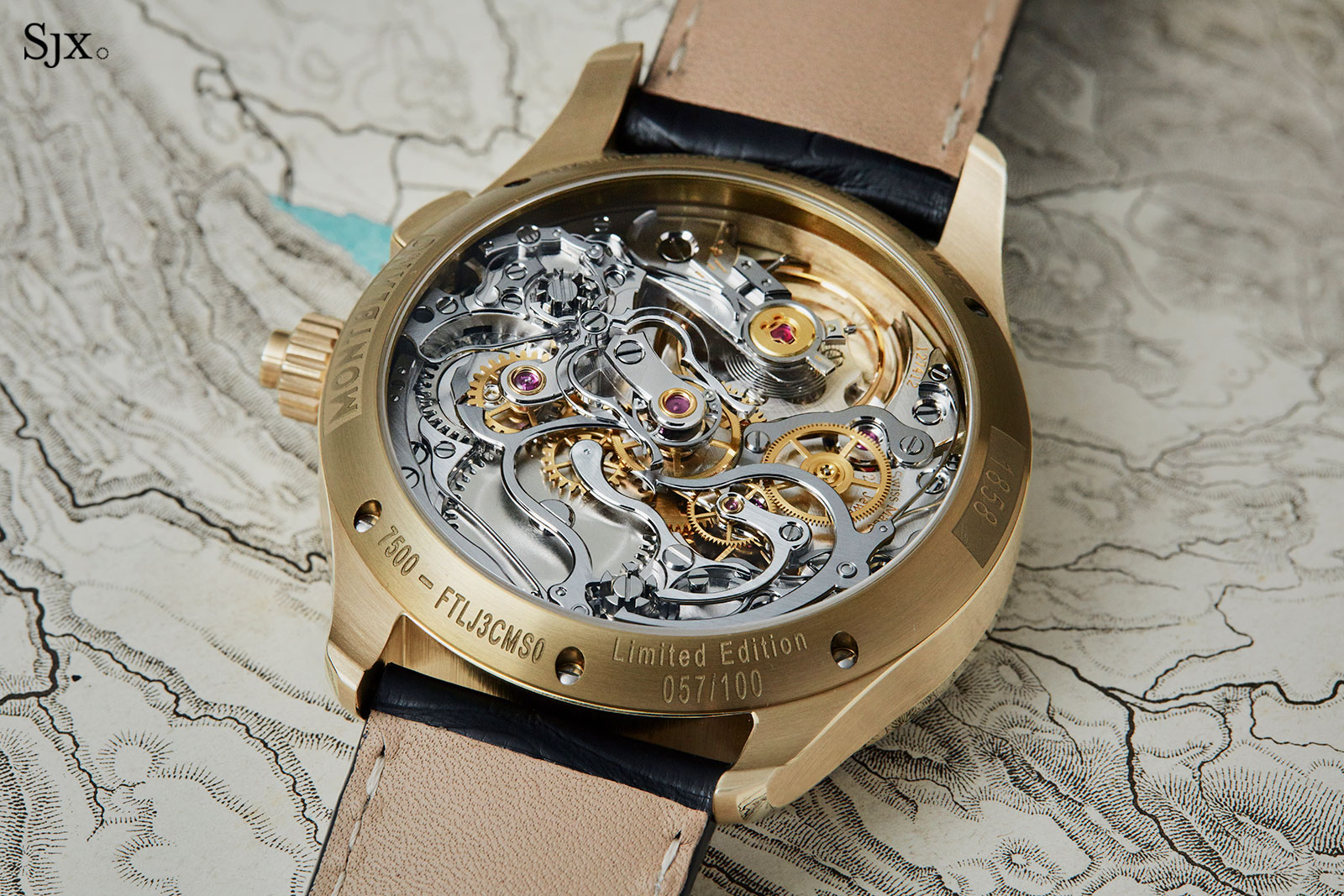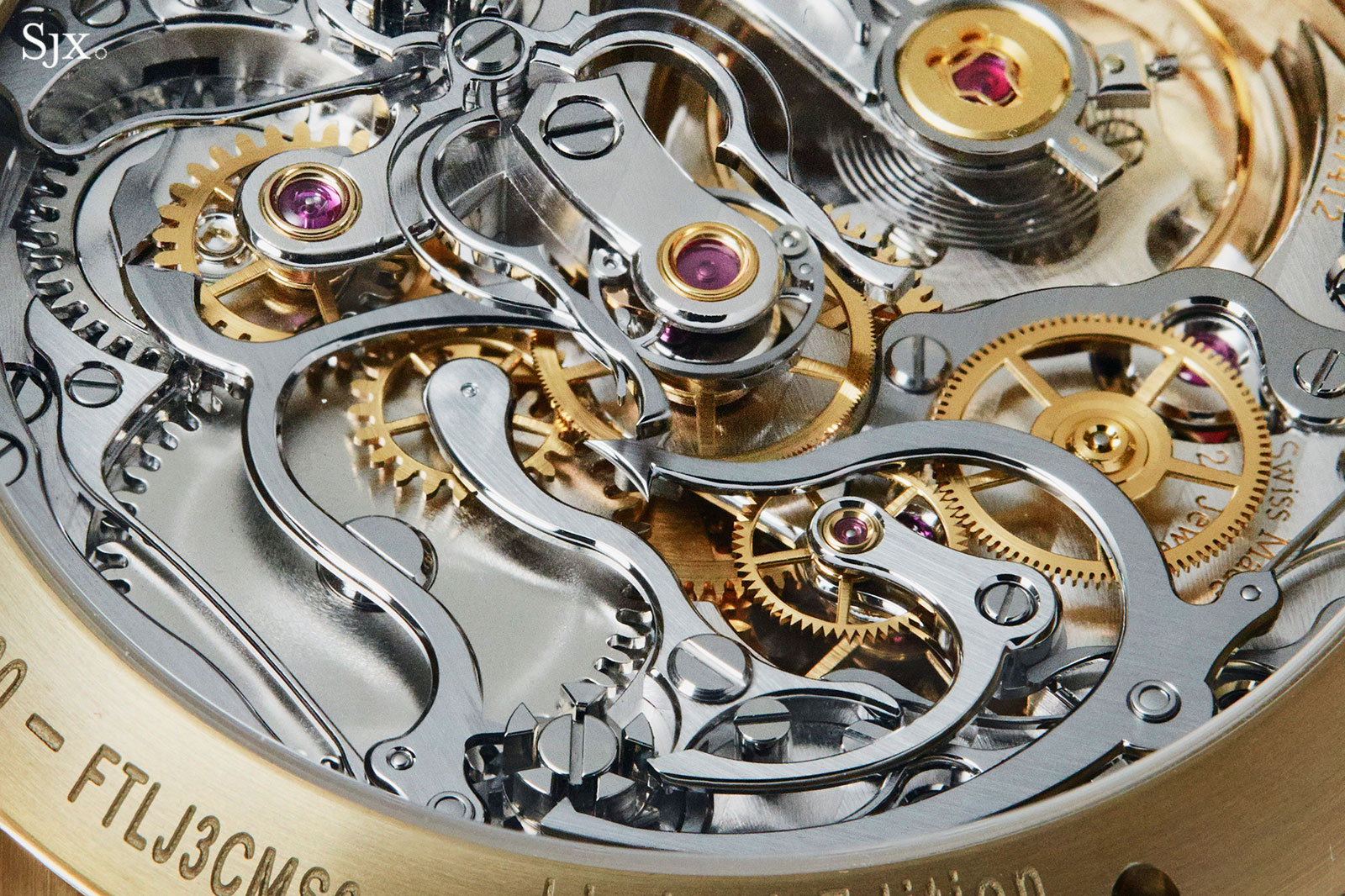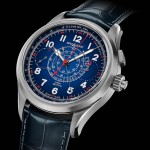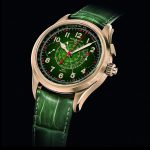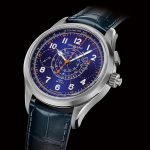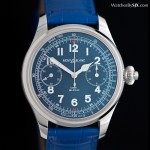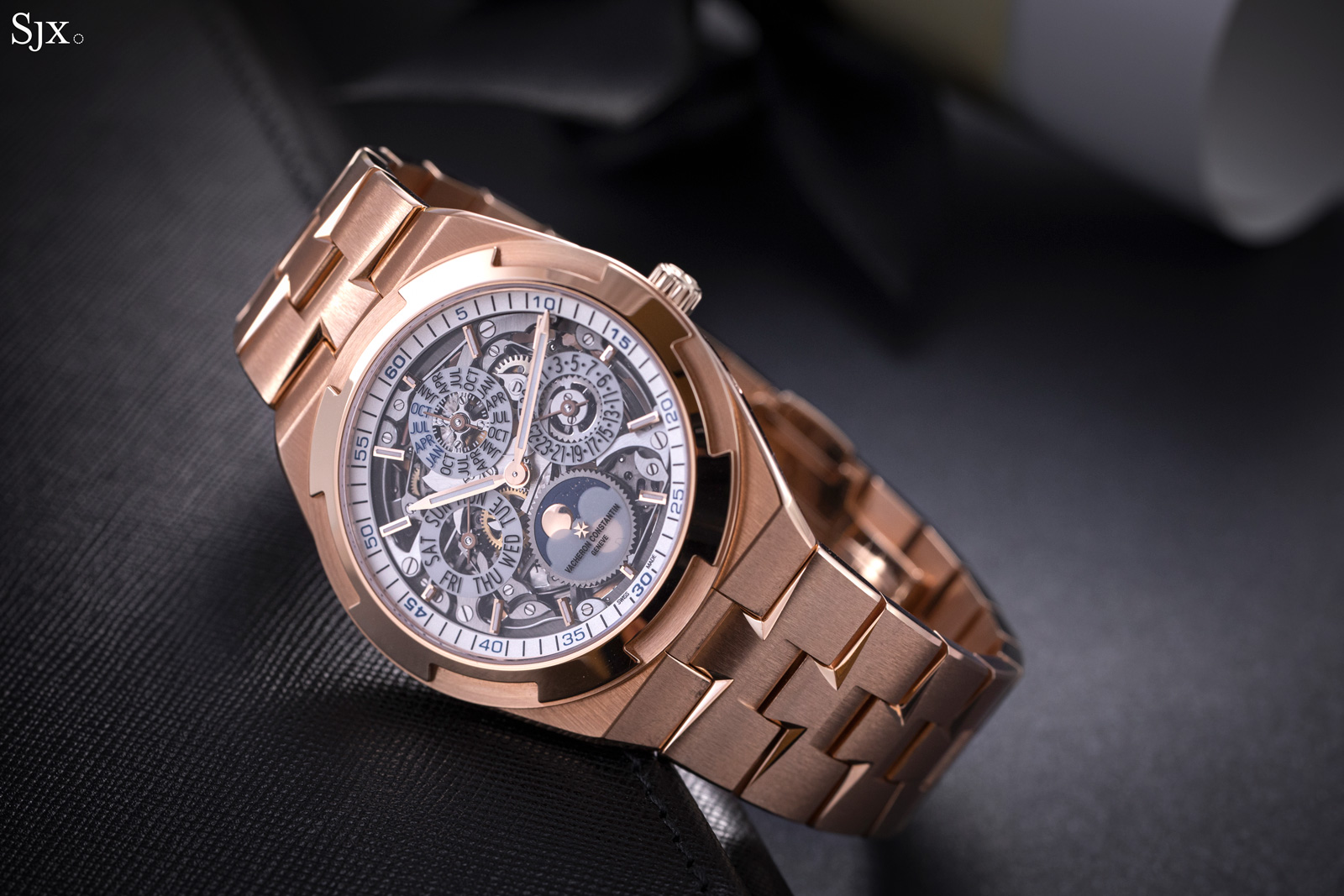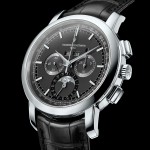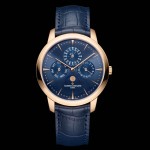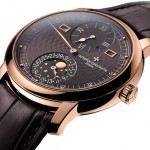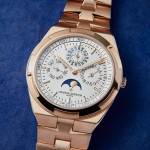Since its launch in 2016, the Overseas line has been steadily filled out with a variety of models, but the most compelling is probably the perpetual calendar. First unveiled with a solid dial, the Overseas Perpetual Calendar is a large but markedly thin watch that sits strikingly flat on the wrist.
With elegant proportions matched by thoughtful design – witness the micro-adjustment clasp for the bracelet – the Overseas perpetual calendar also boasts a high level of finishing for both the case and movement, which happens to be the cal. 1120 descended from the venerable Jaeger-LeCoultre cal. 920.
This year Vacheron Constantin went one better with the Overseas Perpetual Calendar Ultra-Thin Skeleton, which is essentially the same thing but with a skilfully open-worked movement. Boasting a tremendous appeal – matched by a very high price – the new perpetual calendar is amongst the best in luxury-sports watches. Admitted it is more luxury than sports, but it is done extremely well.
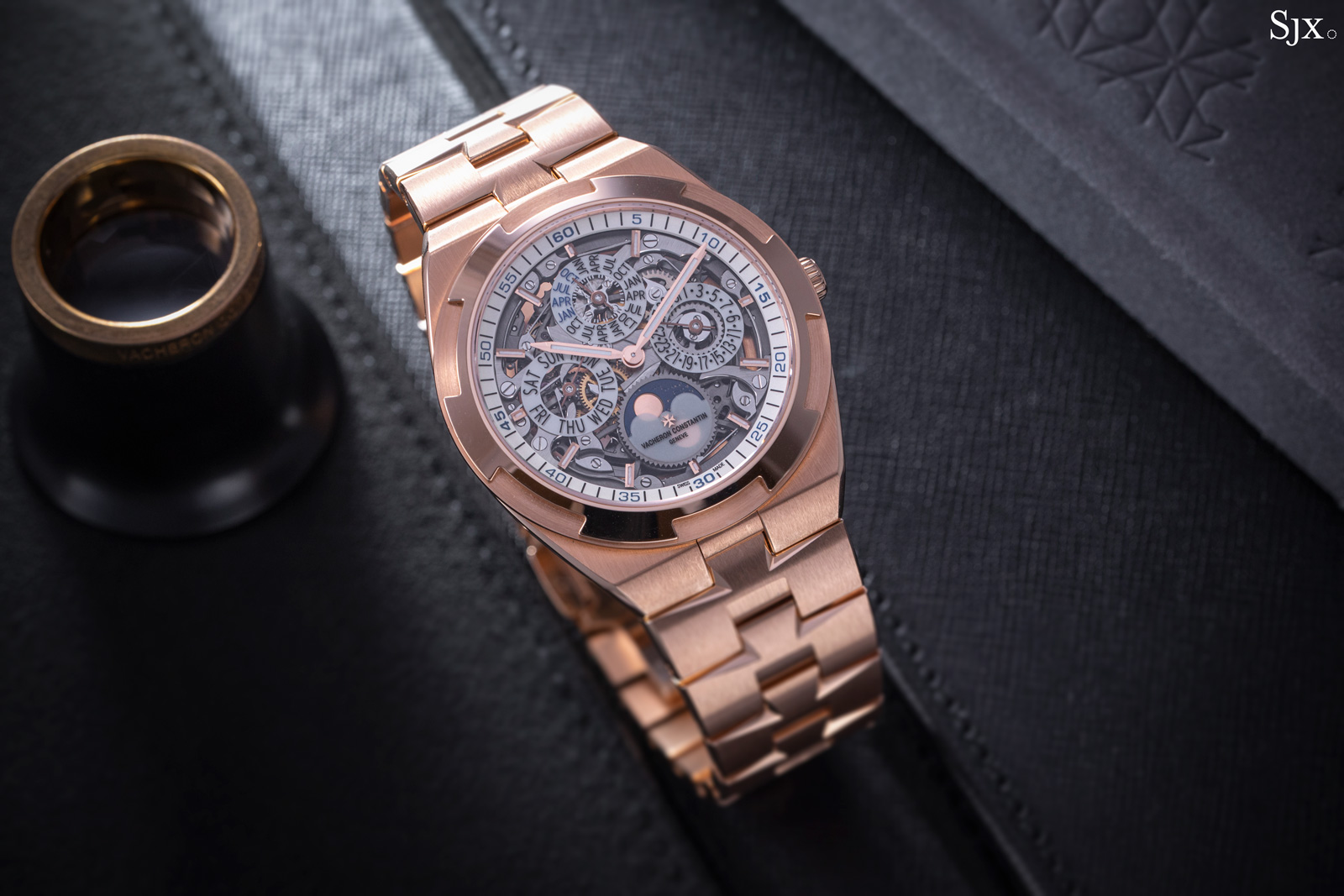
Initial thoughts
In its original guise, the Overseas perpetual is already appealing in both style and substance. It sits wide and flat on the wrist, looking elegant in profile while being refined in its case details – all of the polished elements catch the light nicely. But it was costly – not more expensive than other comparable luxury-sports perpetual calendars – but a lot of money still.
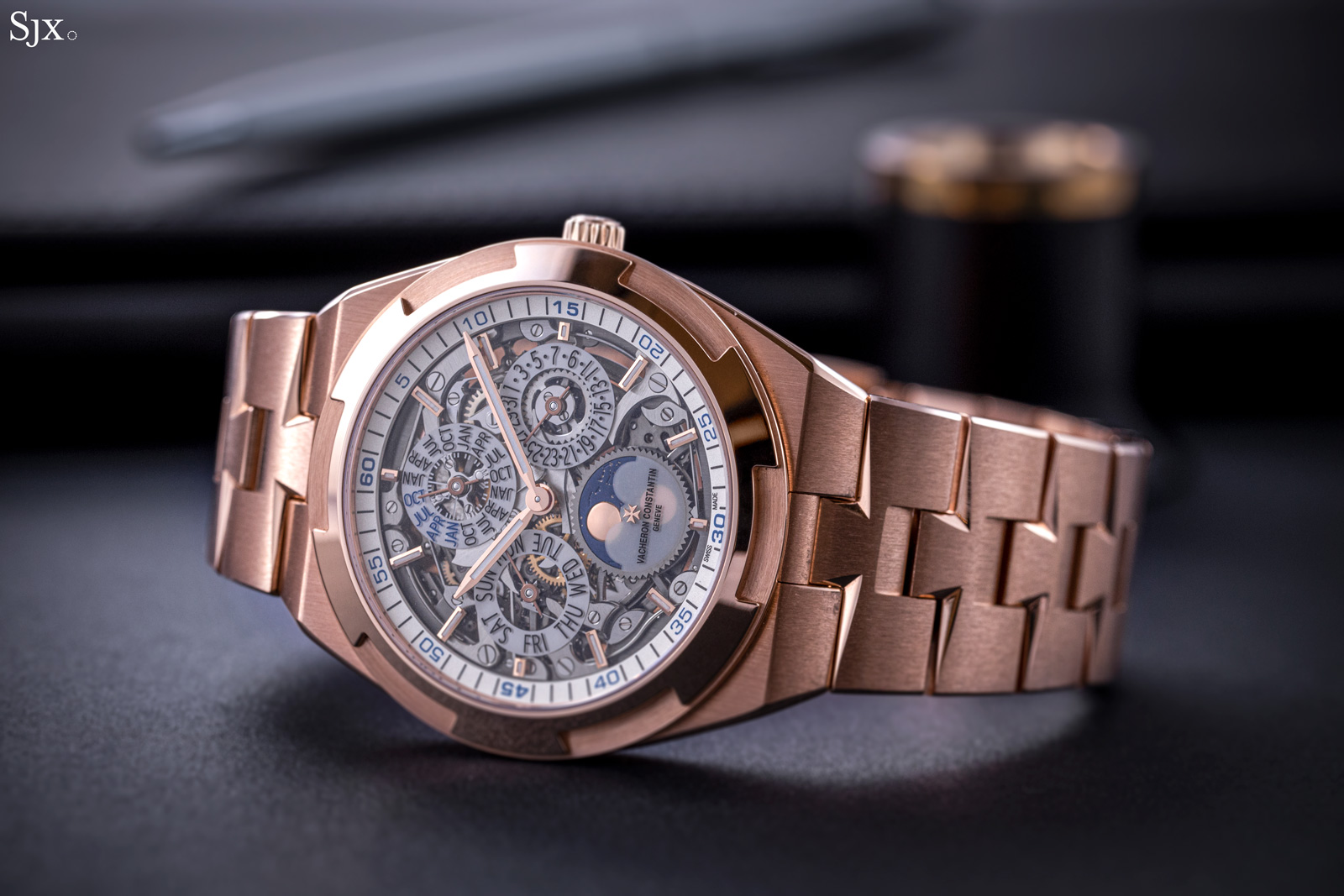
The skeleton version of the watch is everything the original was, but more so. Just as elegantly poised on the wrist, it looks more refined because of all the mechanical elements visible in the dial, which are finished well enough even the small components can catch the light at the right angle. Notably for a skeleton watch, legibility is excellent because of the prominence of the hands and sub-dials. The time is easy to read, although the sub-dials are fairly small, as all perpetual calendars with traditional layouts are.
And the skeleton perpetual is also more expensive – up by almost 30% – than the original version. That’s still a fair deal, because this is what equivalent watches from the competition cost.
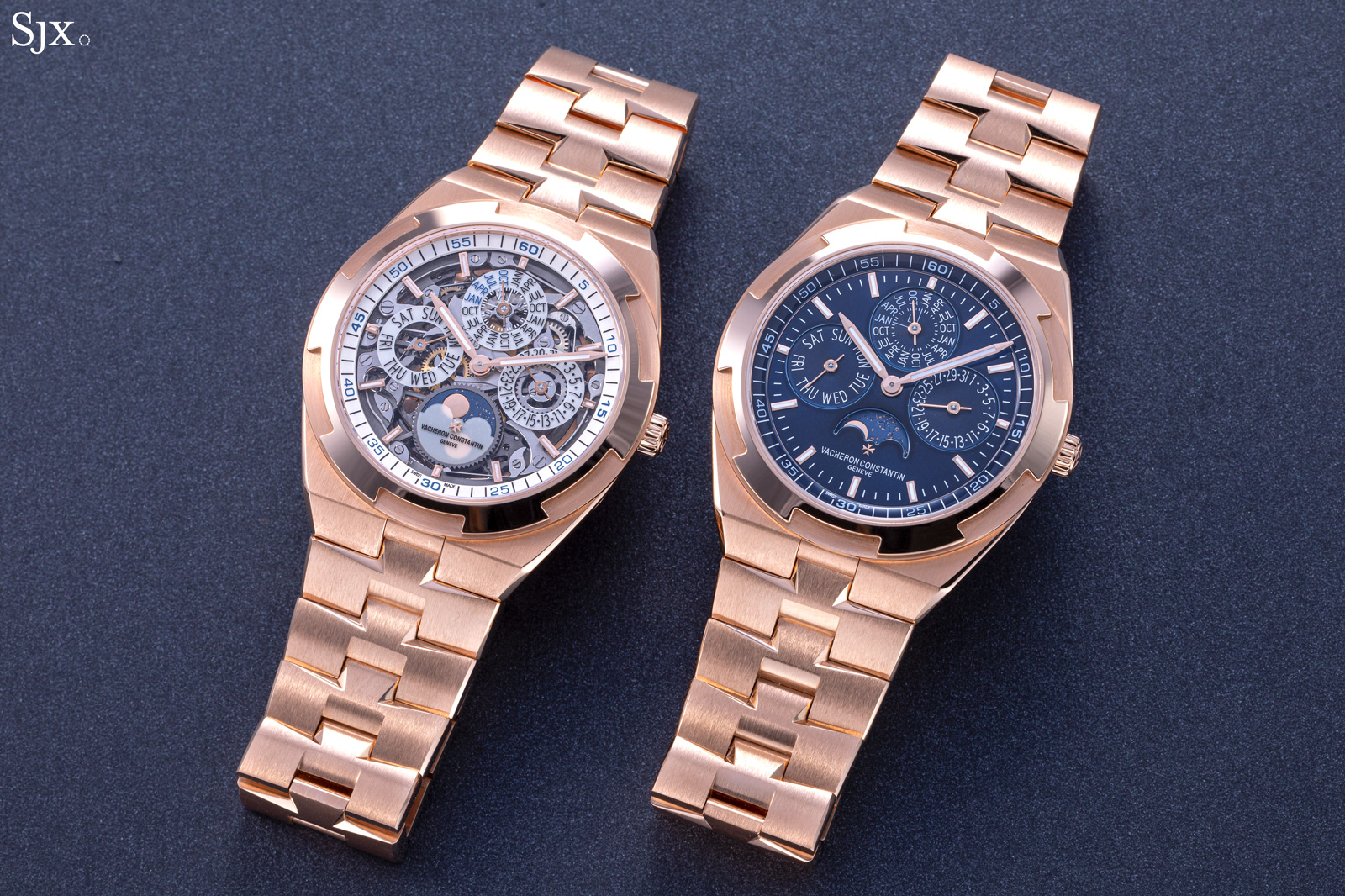
The skeleton version (left), with the original launched last year
Then comes the inevitable comparison to the obvious alternatives from Audemars Piguet and Patek Philippe (though the Patek Philippe Nautilus Perpetual Calendar ref. 5740/1G is not available in skeleton form and probably never will).
The quality of execution is broadly similar across all three comparable – all are very well done inside and out. The Royal Oak arguably has a small edge in terms of finishing, because the case is more complex, and the skeleton version of the Royal Oak perpetual calendar has a few extra flourishes in the movement decoration, including several sharp, inward angles along the bevels of the movement bridges.
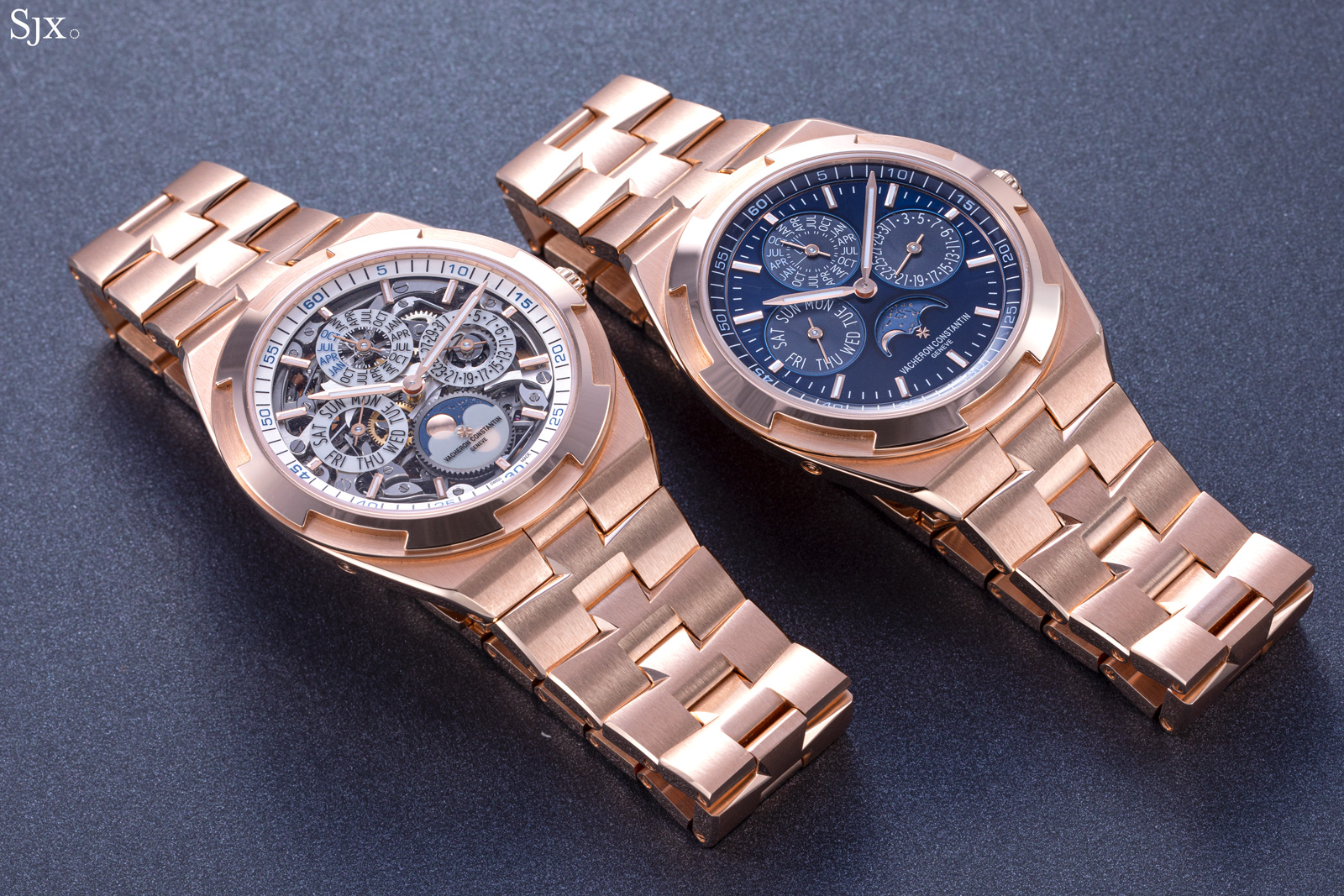
But the Overseas is a bit more elegant, because it is both wider and thinner than both its competitors. The difference is slight – less than a millimetre in both diameter and height – but it gives the Overseas a markedly sleek stance. The latest generation Royal Oak perpetual calendar also has a week-of-the-year indicator that clutters the dial slightly, while the Overseas dial remains as clean as possible.
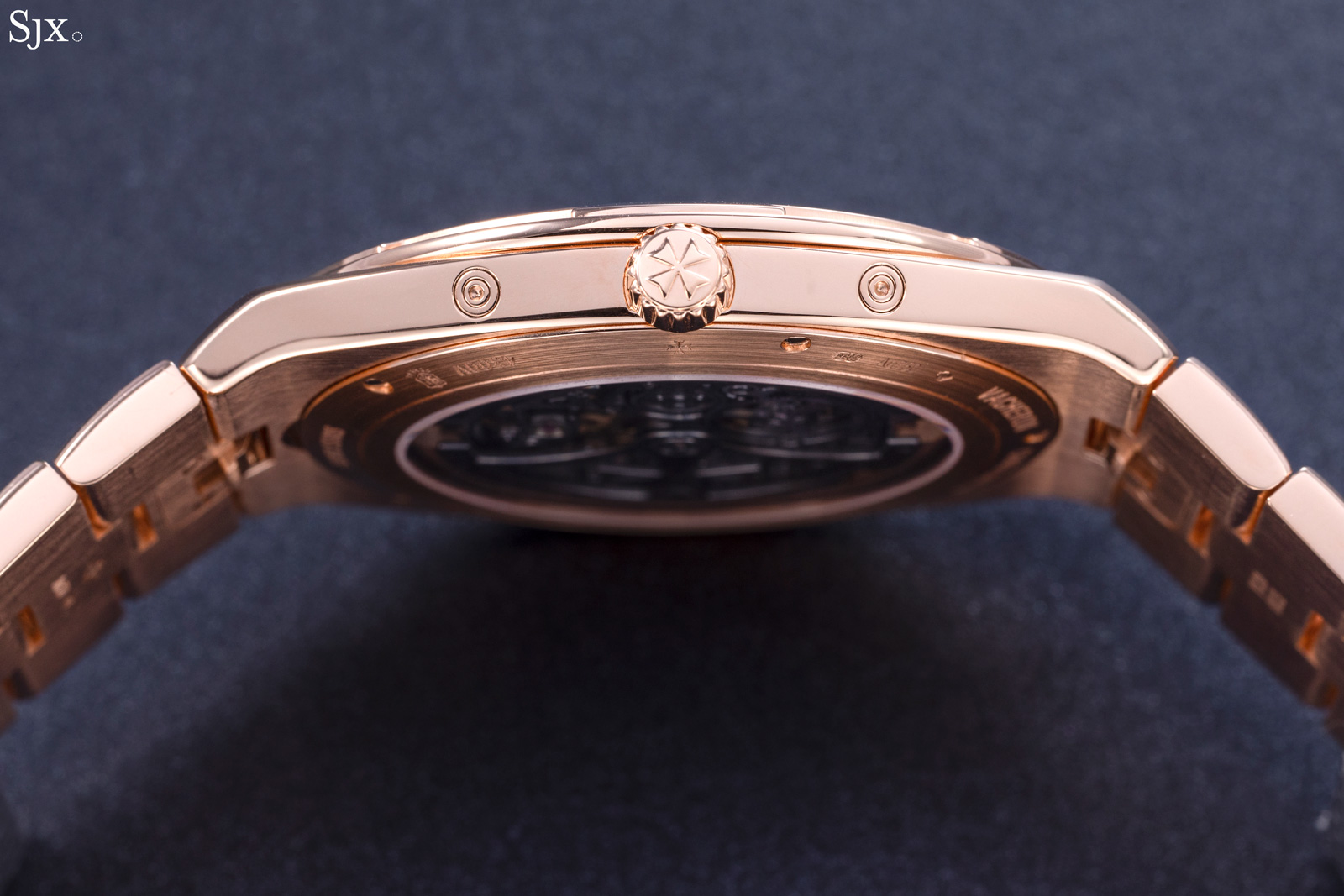
Just 8.1 mm high
More broadly, the Overseas is an appealing design, and in this third-generation guise, well thought out. It is as good as its rivals, but suffers from being far newer. The Overseas was only introduced in 1996, although Vacheron Constantin debuted its first-luxury sports watch in 1977 with the 222, which was followed by a succession of other less successful models. Put simply, the Overseas has not had enough decades to establish itself, and it is still far, far away from its 40th anniversary, a major milestone both its competitors have passed.
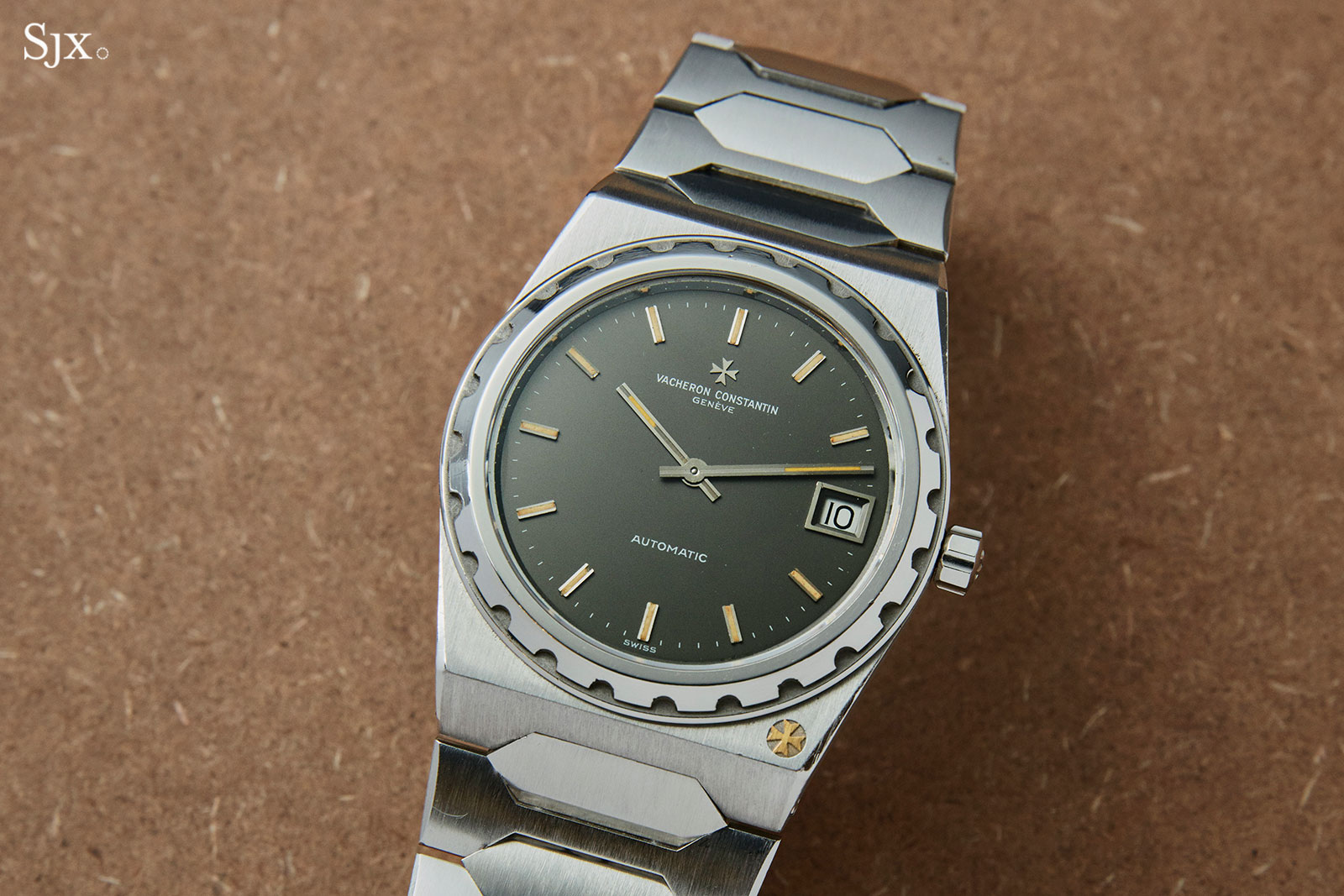
The 222 in steel
Open-worked clarity
Despite revealing the intricacies of the perpetual calendar, the face of the watch is notably clear. Made of clear sapphire, the dial is well designed, and probably as legible as a skeletonised perpetual calendar can be.
The sapphire dial carries the solid-pink gold hour markers that are read in tandem with a silvered chapter ring with the minute track. Matched with sword-shaped hands that are simple but substantial enough, the time is easy to read.
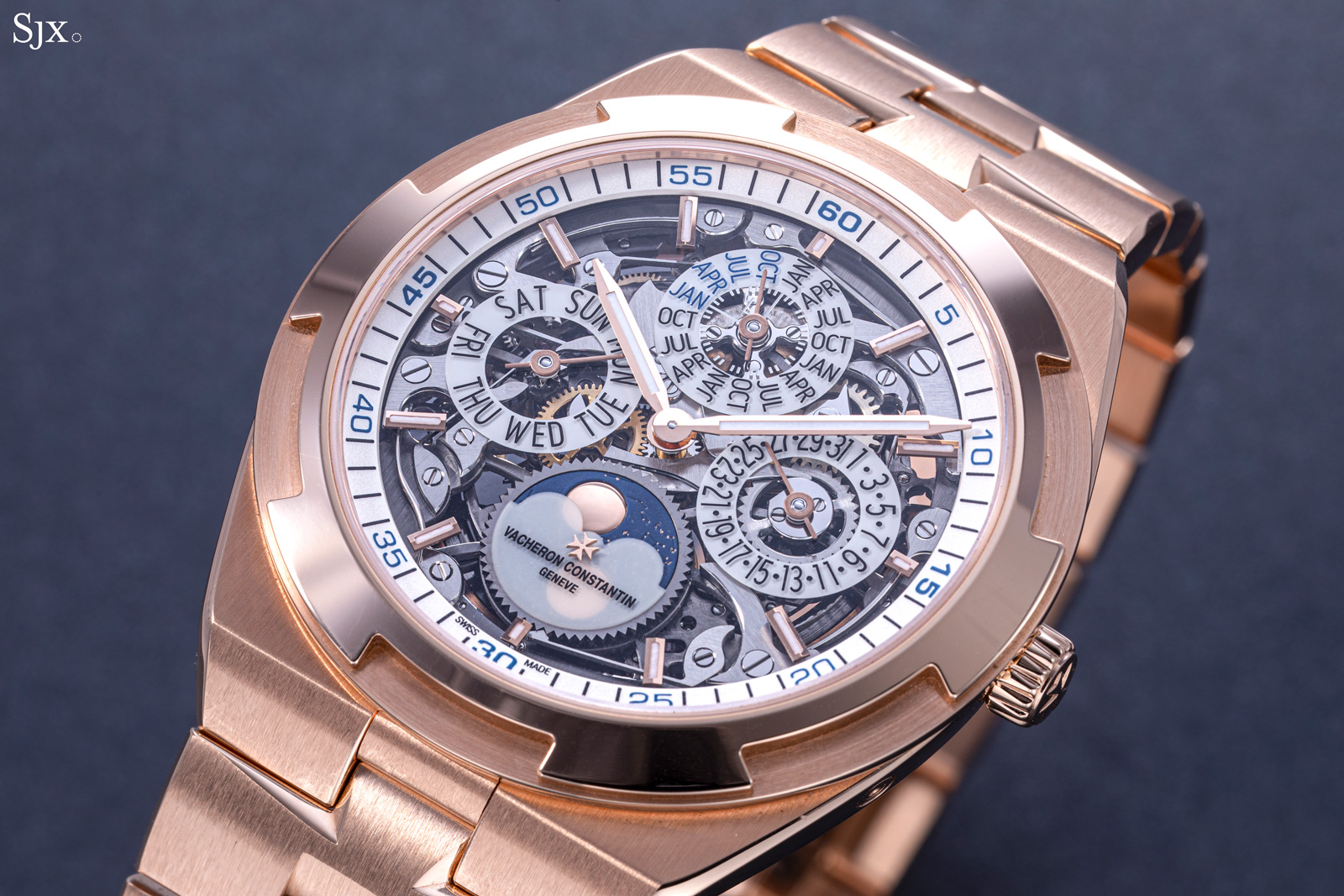
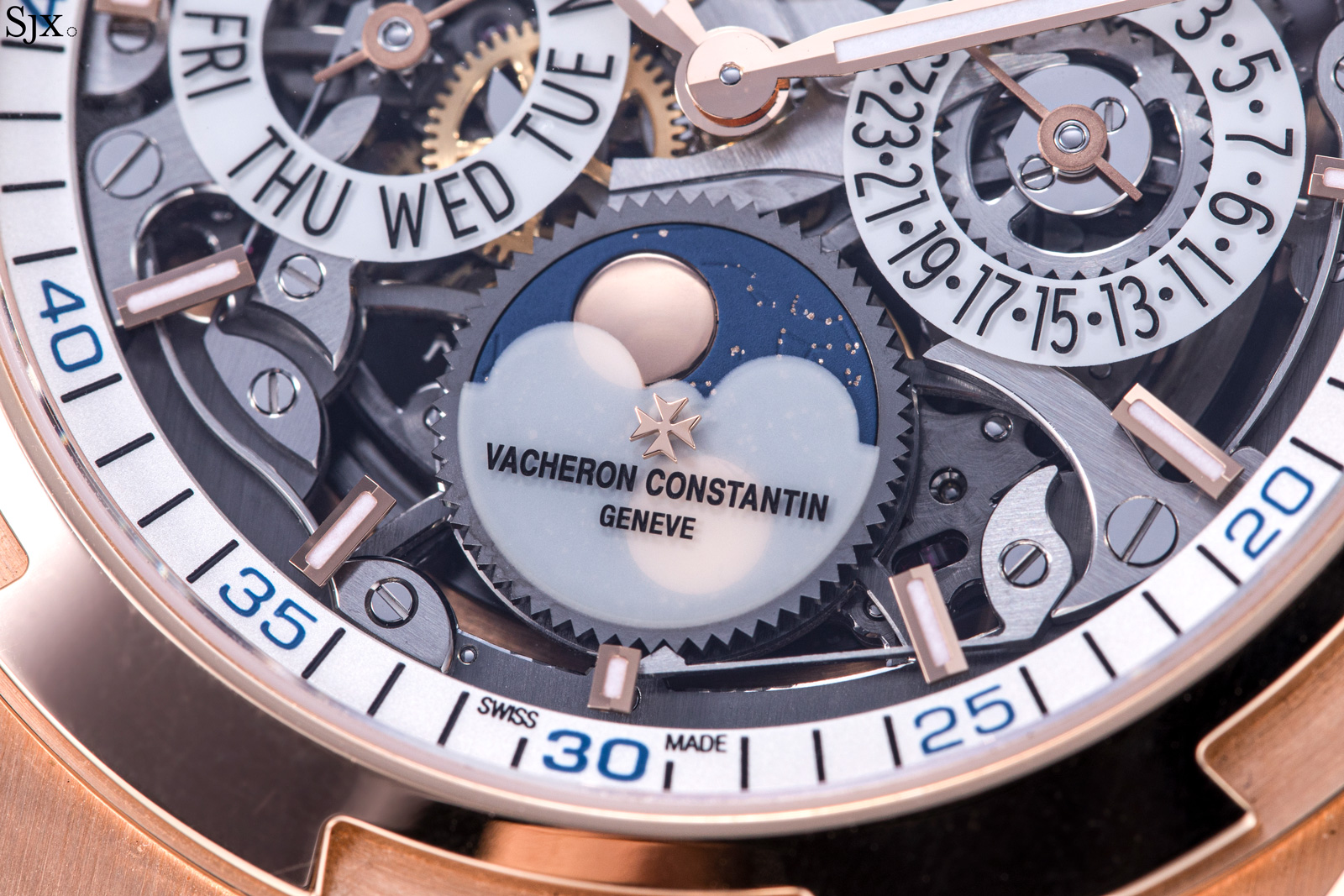
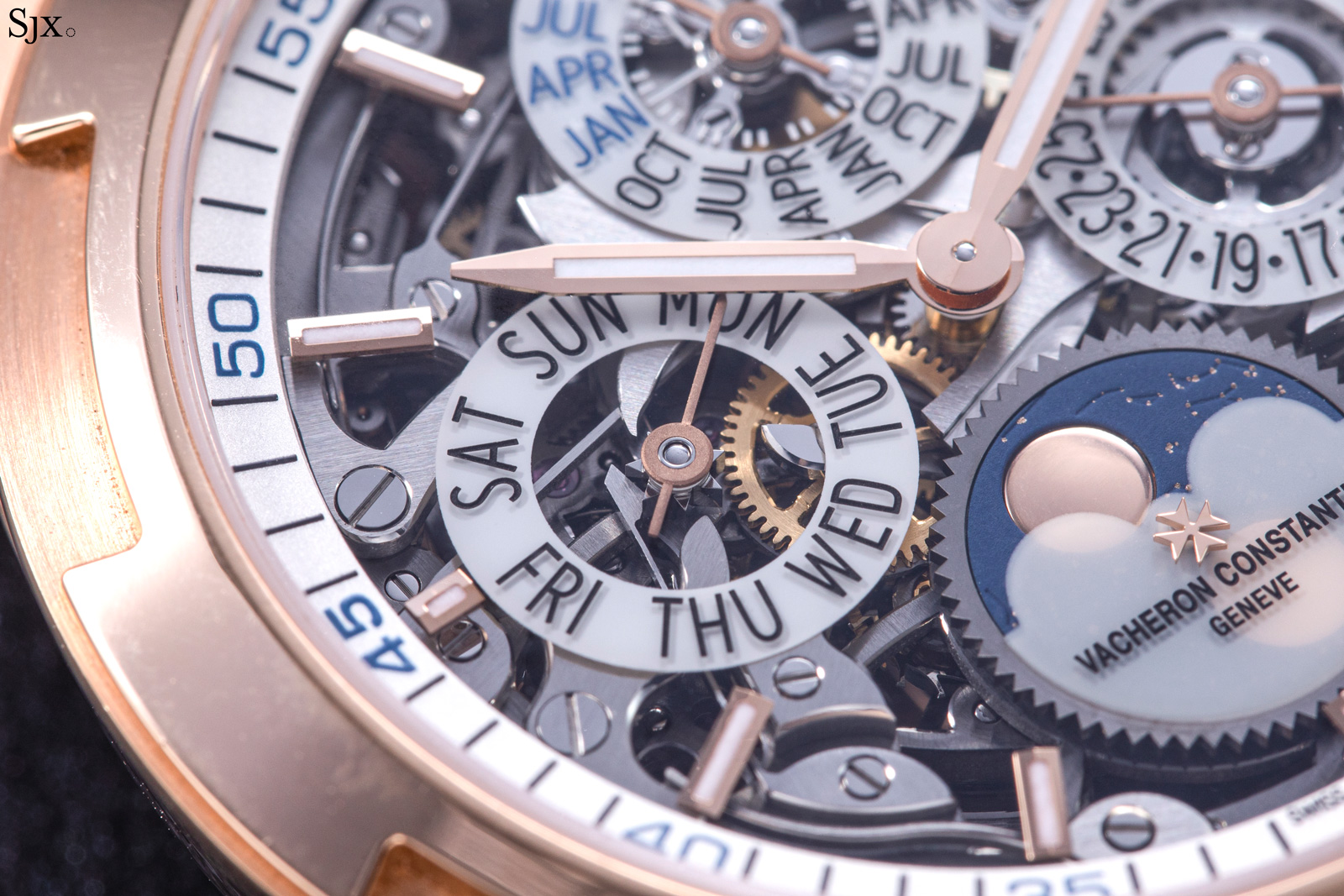
The calendar, on the other hand, is just as easy to read, but in small print, which means it has to be read carefully, especially since the hands for the calendar displays are narrow. This is par for the course for perpetual calendars of this type, so it is a function of the traditional calendar layout.
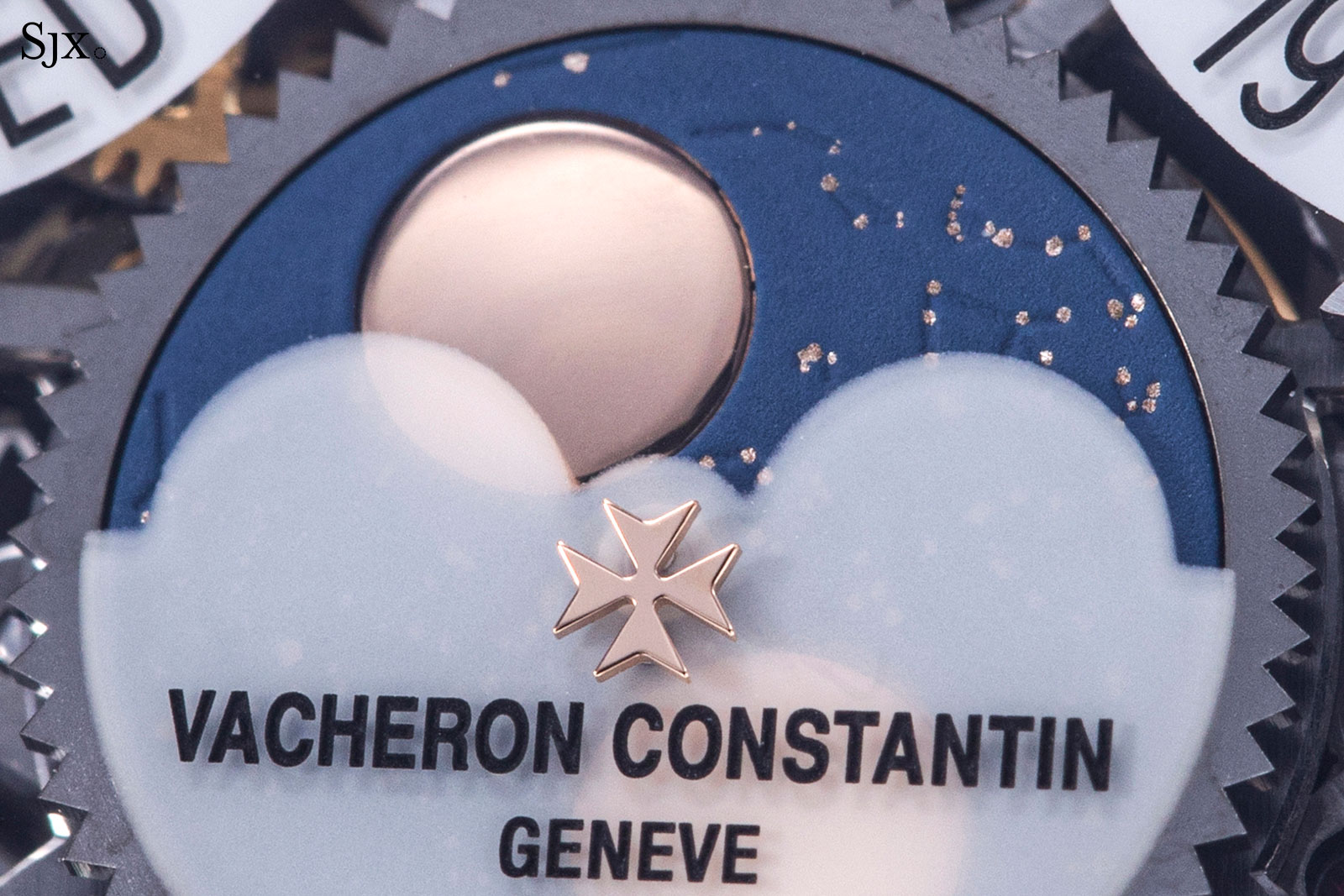
The moon phase disc also incorporates constellations that are so tiny they are only visible under magnification
The legibility of the sub-dials is a consequence of both their design and execution. The calendar registers are actually on both sides of the sapphire disc, something that is revealed only up close by the shadows cast by the markings.
The front of the disc is engraved with the calendar indications, which are further filled with coloured lacquer for better readability, while the back of the disc is printed with the opaque white chapter rings for each sub-dial. Being light coloured, the white chapter rings stand out against the grey tone of the mechanical parts, and are quite crucial to the calendar’s legibility.
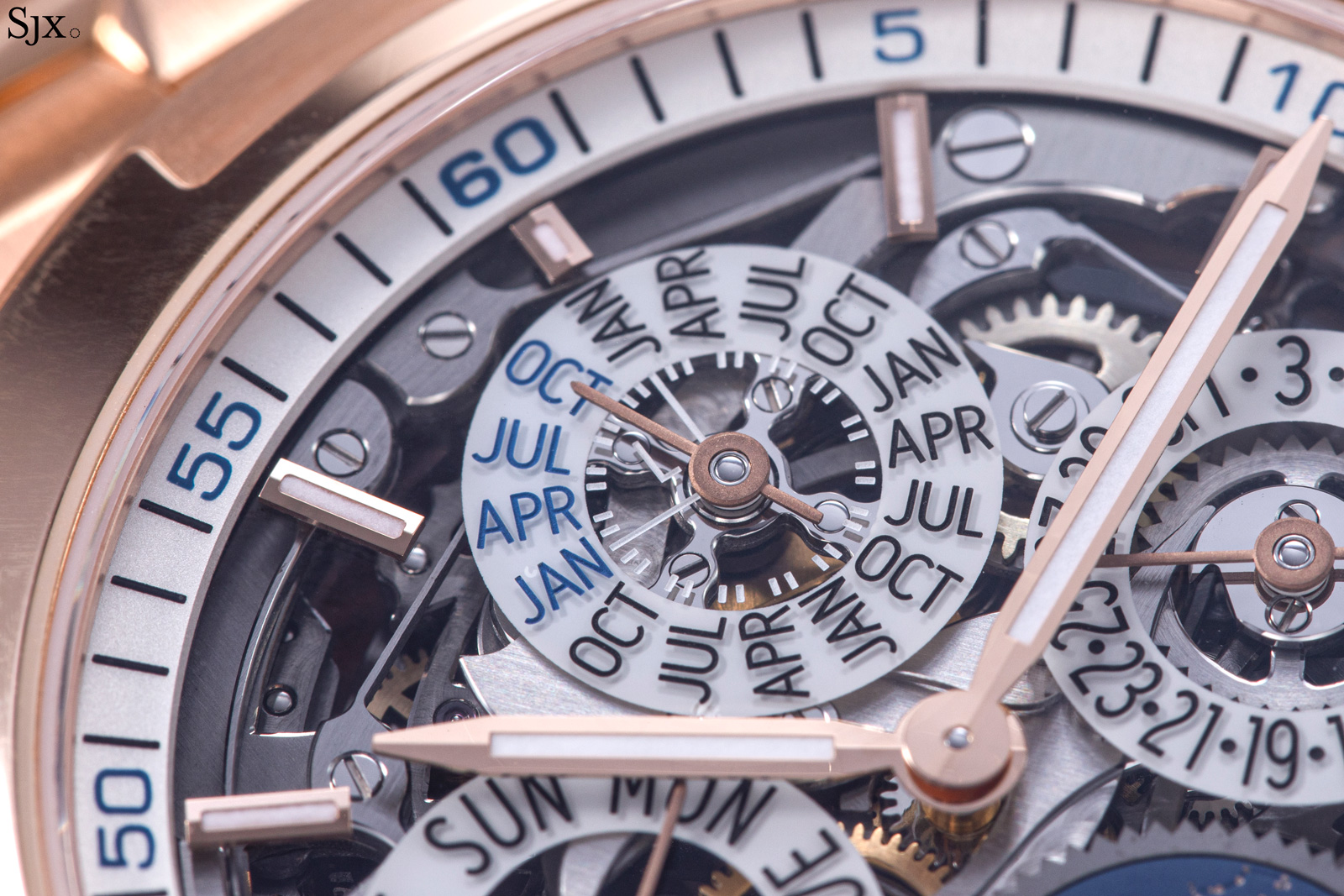
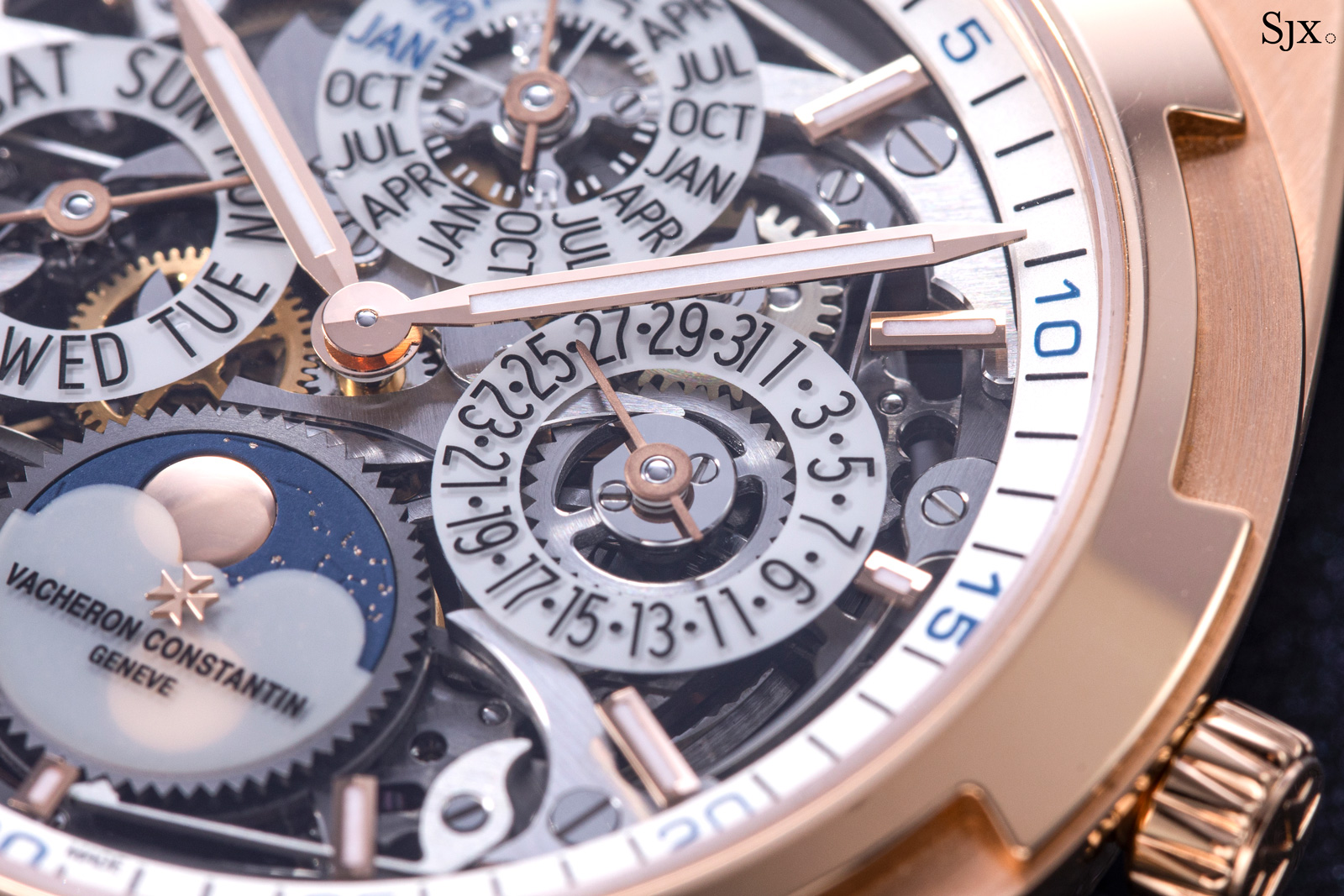
Ultra-thin automatic
What’s visible through the dial is a Dubois-Depraz perpetual calendar module. Though common and widely used in watches across the price spectrum, the module has been refined by Vacheron Constantin in finish, resulting in an attractive under-dial mechanism.
The module, in turn, is fitted to the cal. 1120. Seen through the display back, the distinctive beryllium supporting ring for the rotor immediately makes the movement recognisable – it was originally the ultra-thin Jaeger-LeCoultre cal. 920. Today only used by Vacheron Constantin and Audemars Piguet (which got the rights to produce the movement from its historical stake in Jaeger-LeCoultre), the calibre is over 50 years old but still in use because it is an excellent movement.
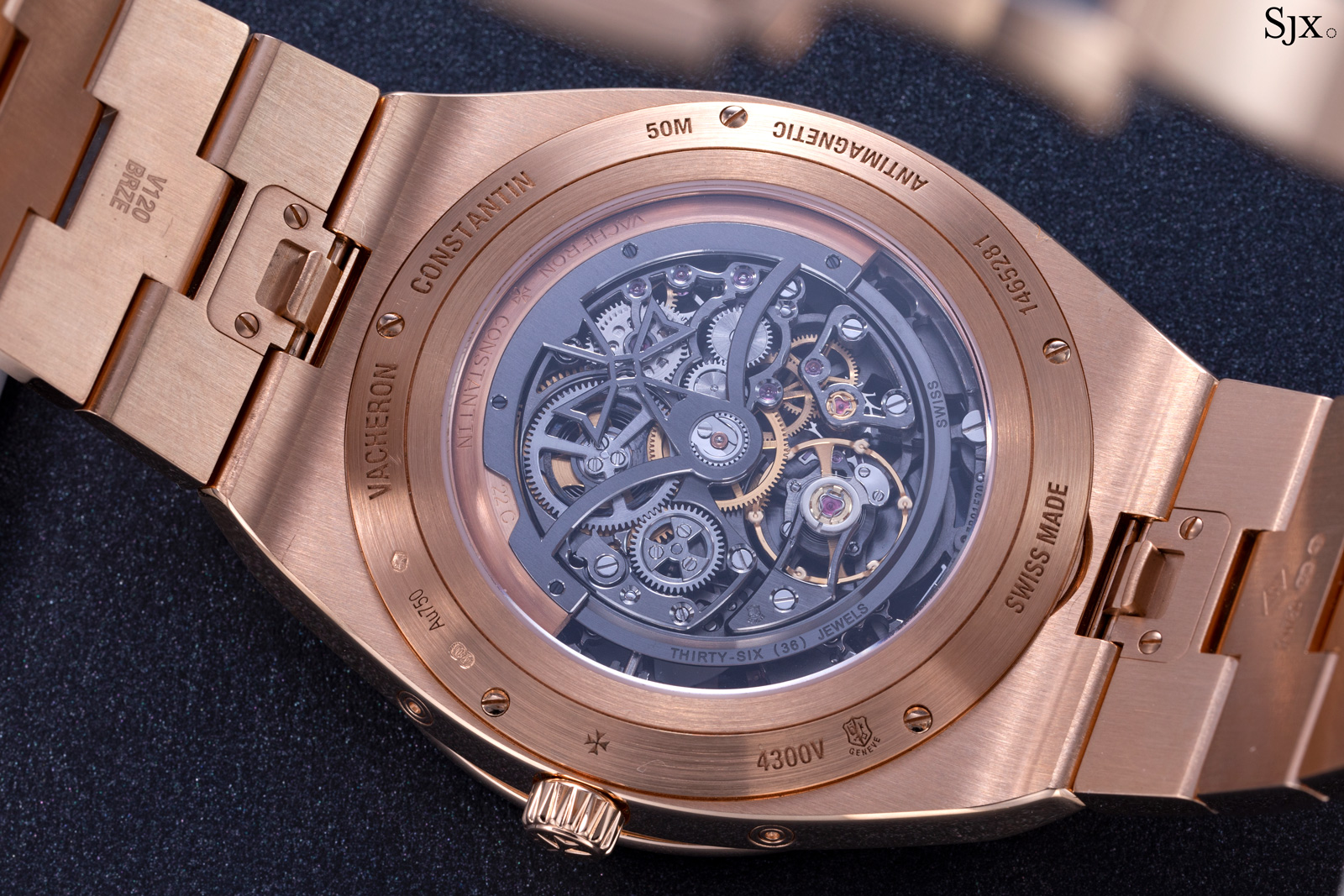
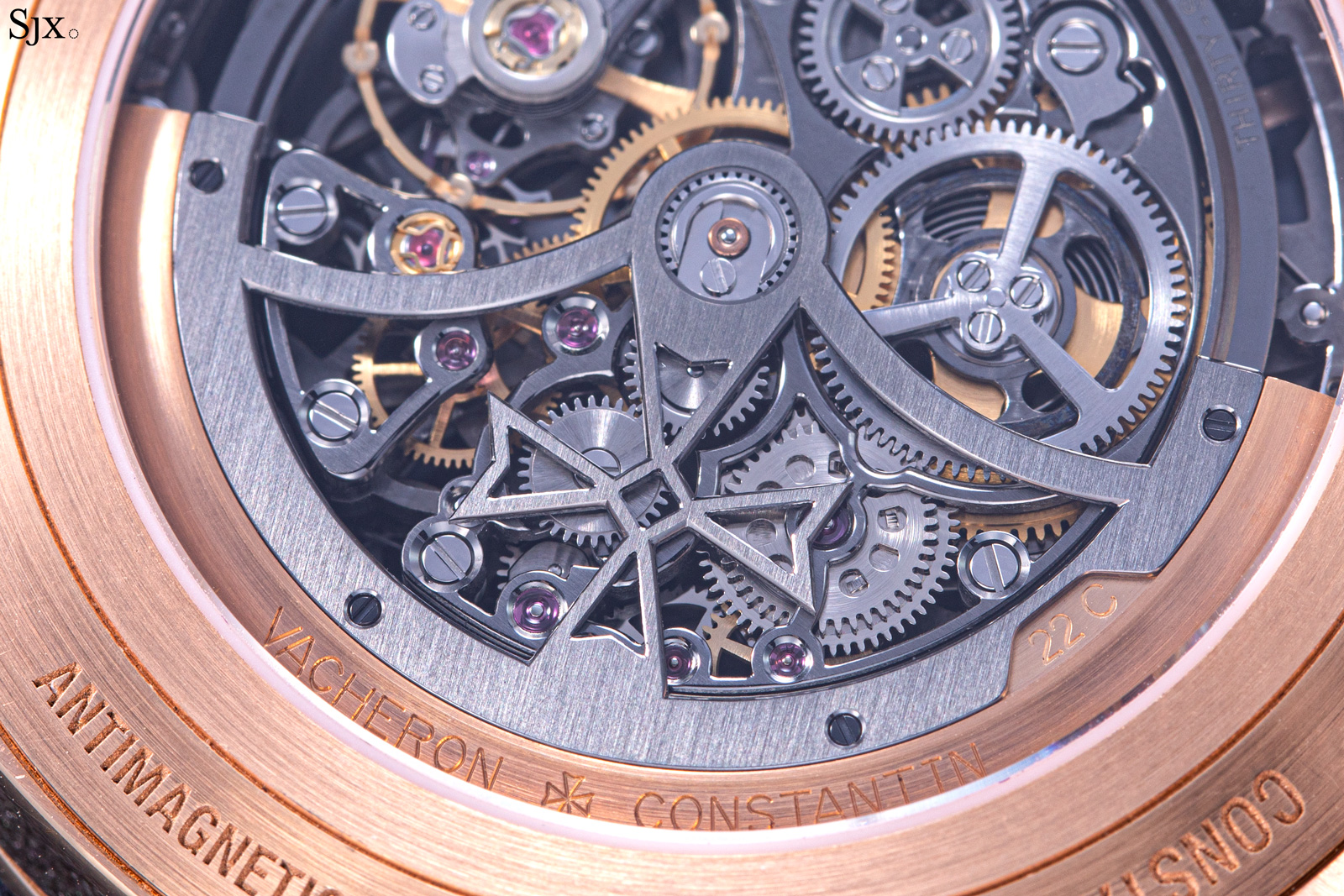
Slim and sophisticated, the movement also performs exceptionally well for an ultra-thin movement – something our contributor Tim Lake detailed in his story on HDF – but requires more care in assembly and adjustment than newer, thicker movements. The complexity of its production explains why watches equipped with the movement cost more than similar models with modern calibres; the time-only Overseas with the cal. 1120 costs almost double the Overseas with the thoroughly modern cal. 5100.
Here’s it’s been artfully skeletonised and executed in a way that suits a modern sports watch. With all the bridges plated in ruthenium for a dark grey finish, the open working is all about clean lines and dark colours, with the gilt wheels serving as highlights across the movement.
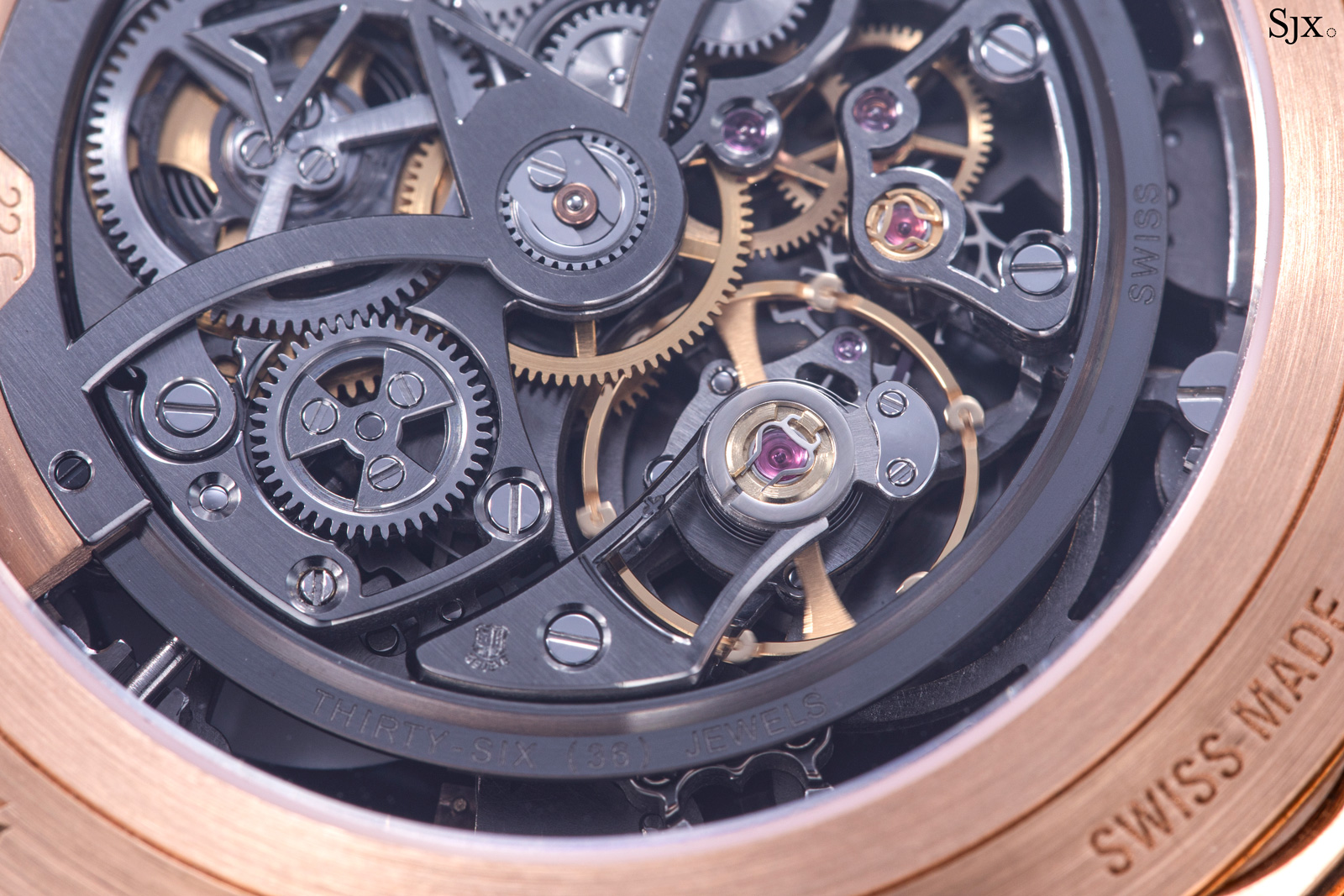
All of the bridges have been skeletonised to the maximum possible. The escape wheel bridge, for instance, is almost an outline with just enough to accommodate the two screws and pivots. They are finished with a fine linear brushing on the top, along with polished bevels on all edges. But the dark colours of the movement mean that the decoration is not extremely apparent, and is most visible on the steel parts.
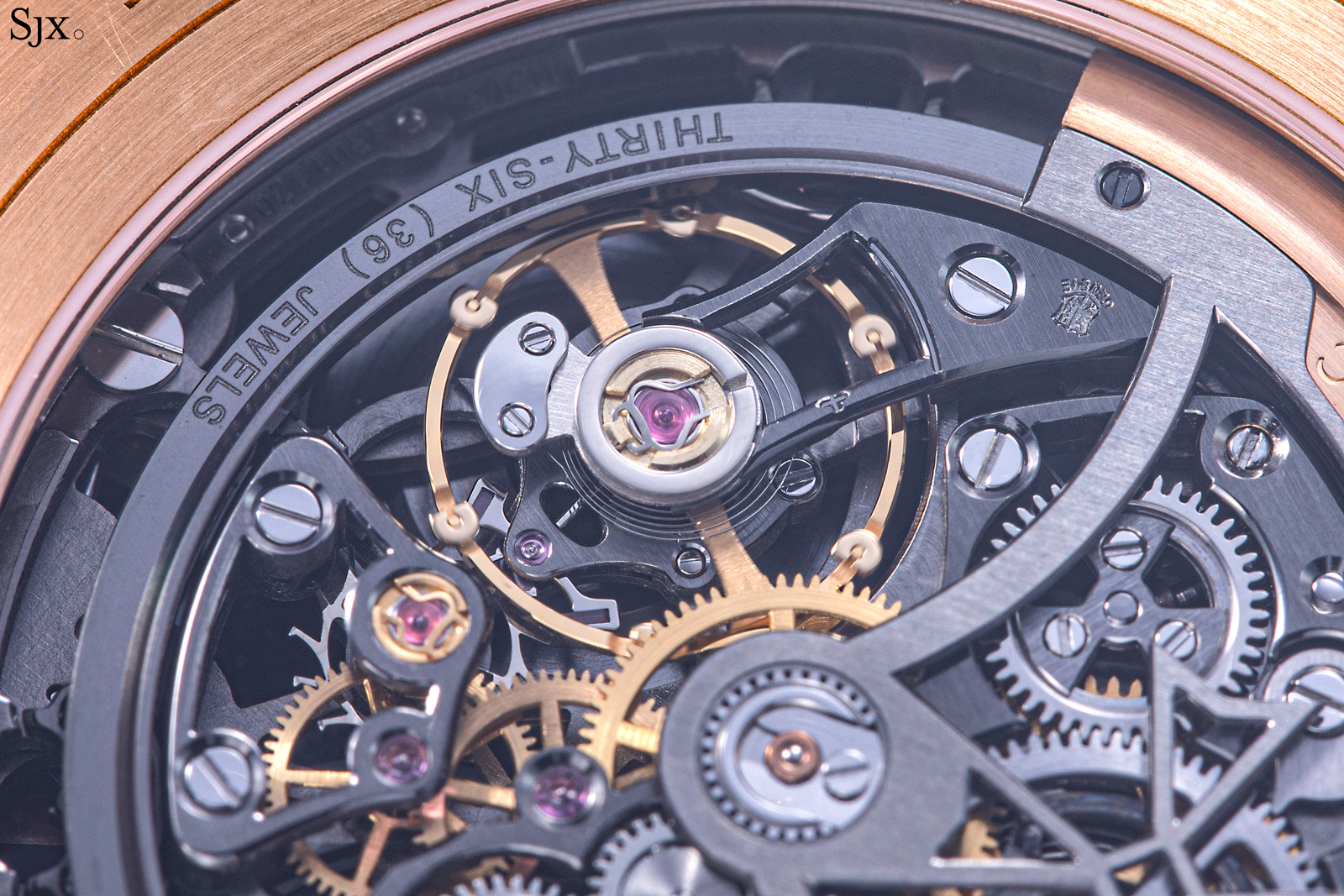
The free-sprung, adjustable-mass balance wheel
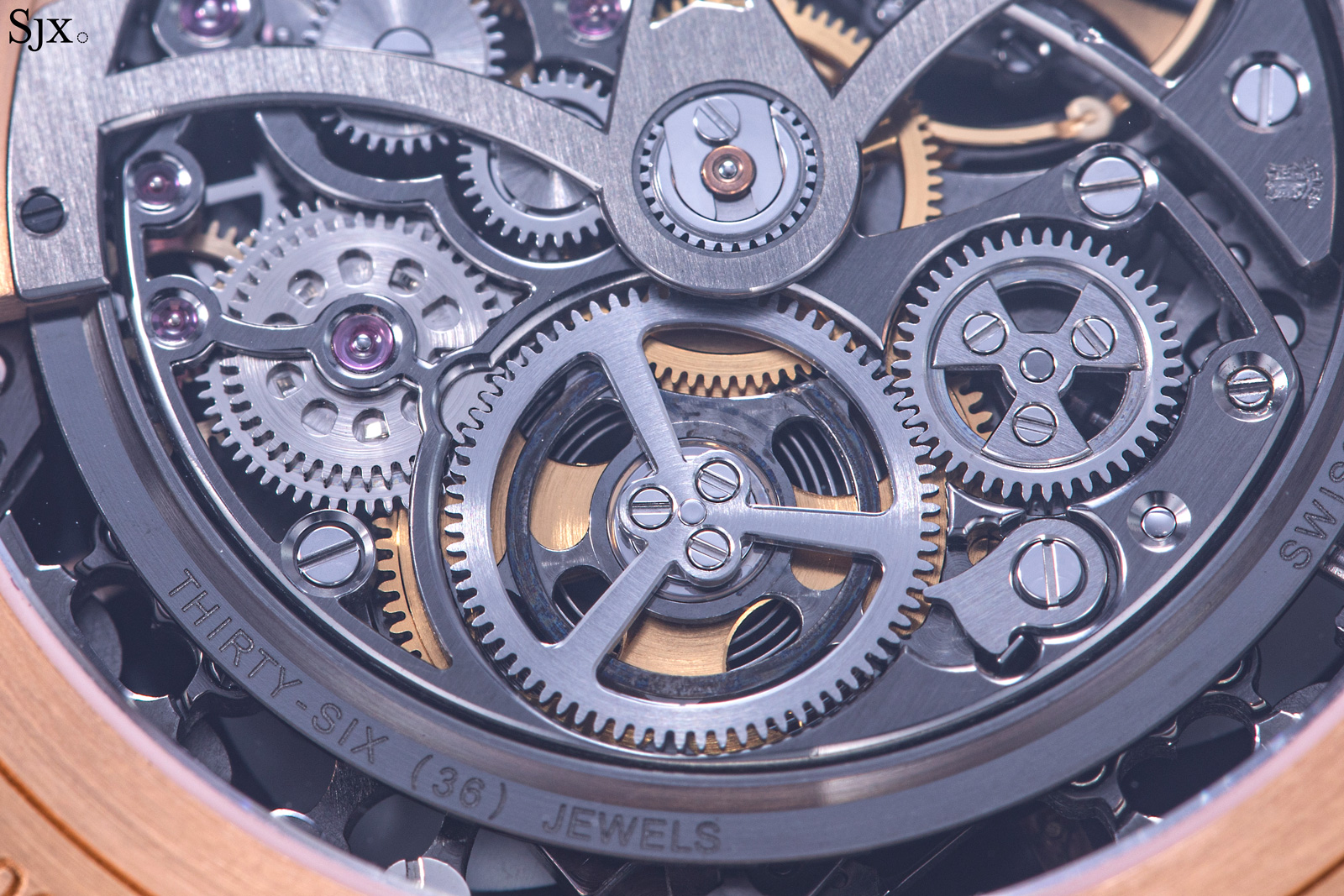
The open-worked barrel and ratchet wheel reveal the mainspring within
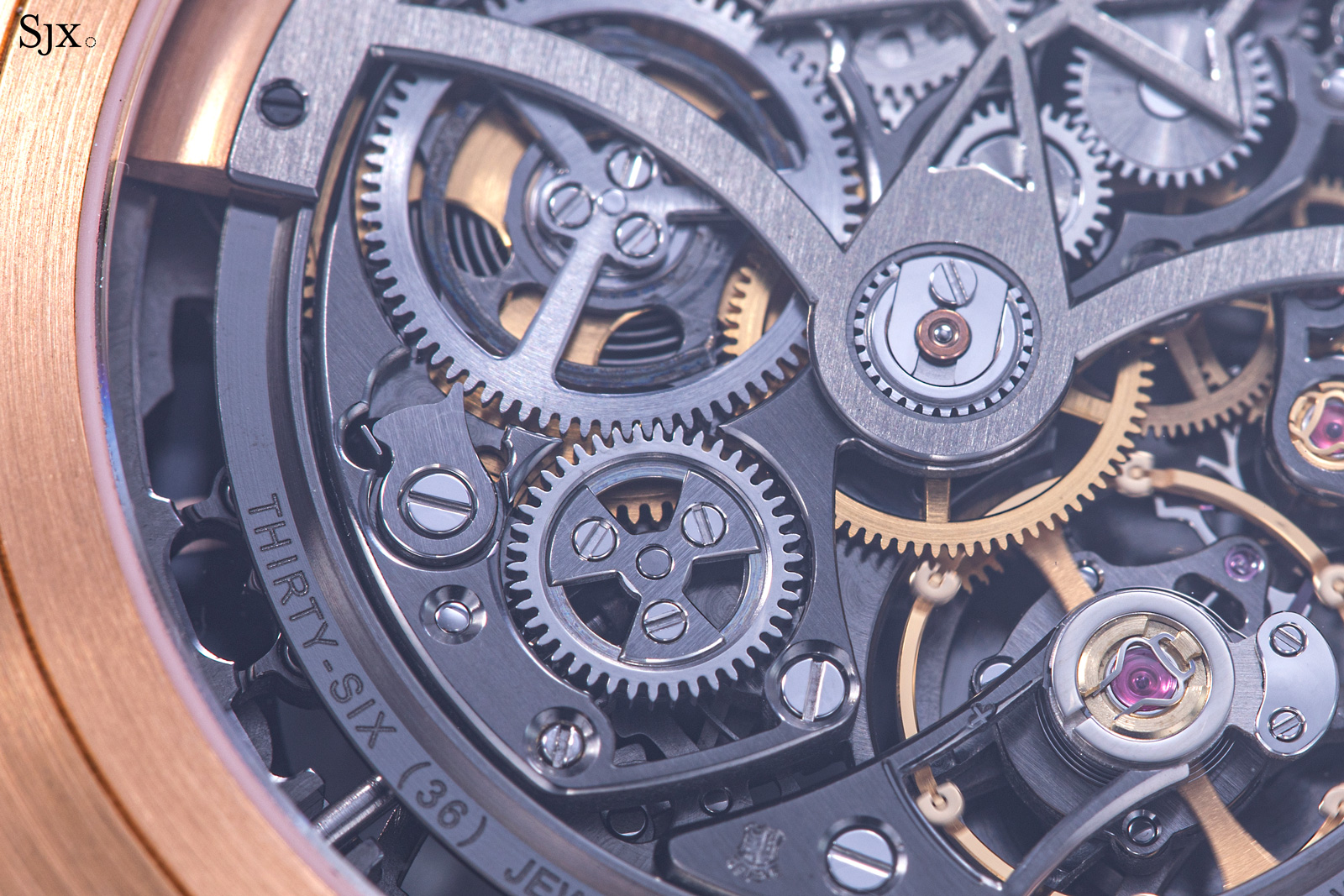
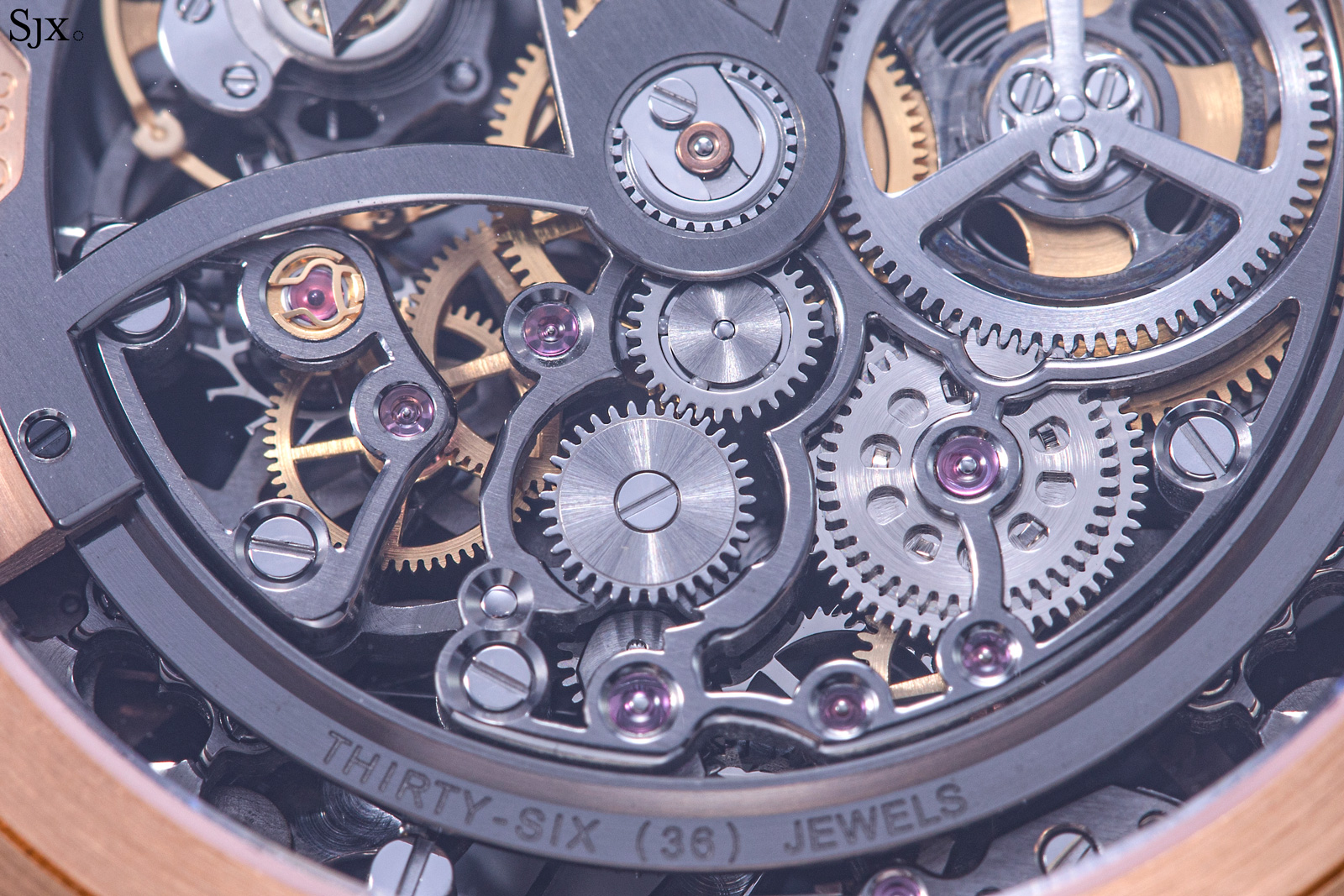
Examined up close the finishing shows itself to be done extremely well. Almost all components have polished, bevelled edges, even the crown and barrel ratchet wheels, while all the screws have polished tops along with chamfered slots and edges.
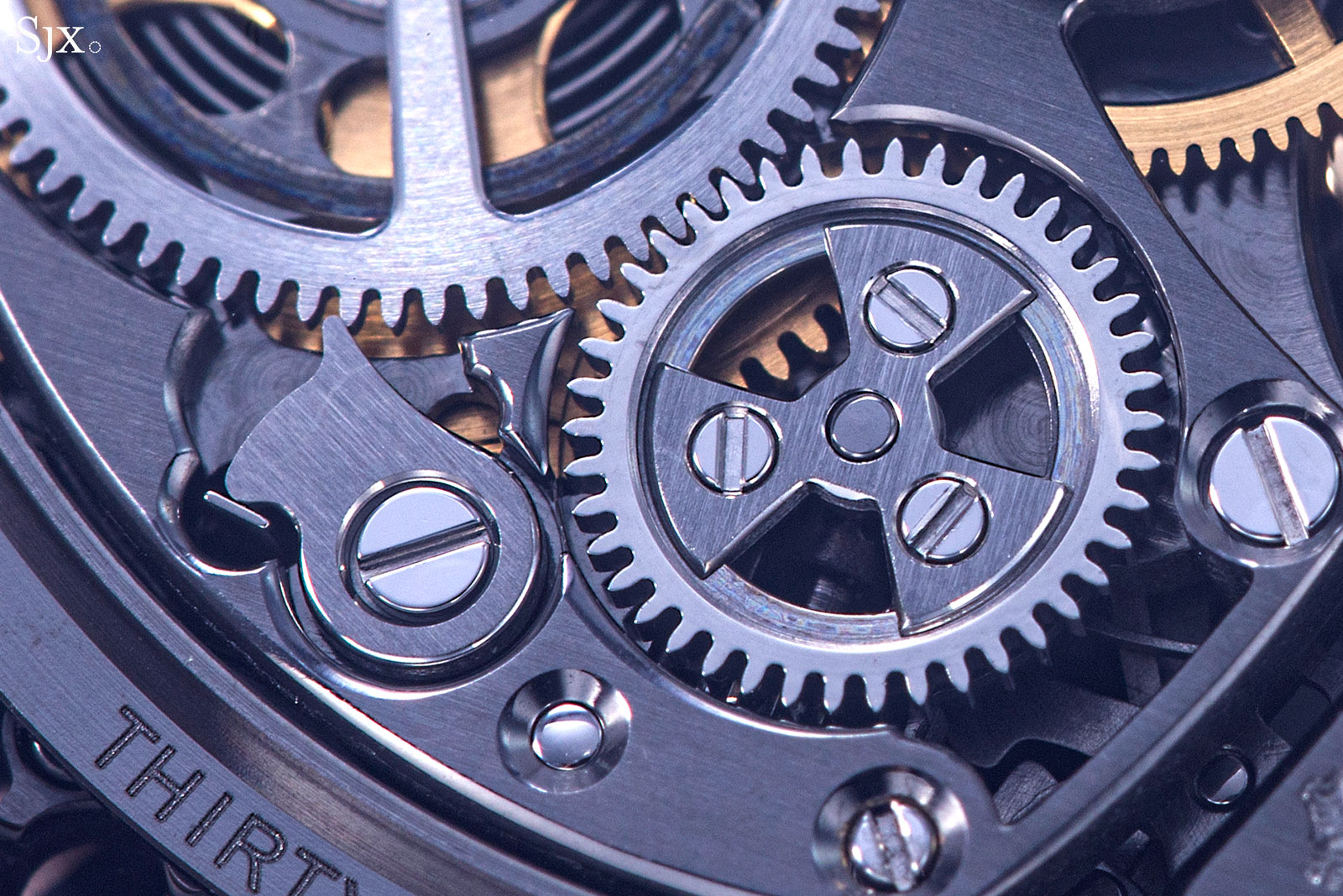
The crown wheel and winding click

The pair of automatic winding wheels
The same can be said of the components under the dial, which form the perpetual calendar mechanism. The levers, wheels, and springs are all properly attended to. In fact, they are done so well they appear slightly finer than the parts on the back. And because because most of the calendar mechanism is steel, the components appear slightly brighter than those visible from the back.
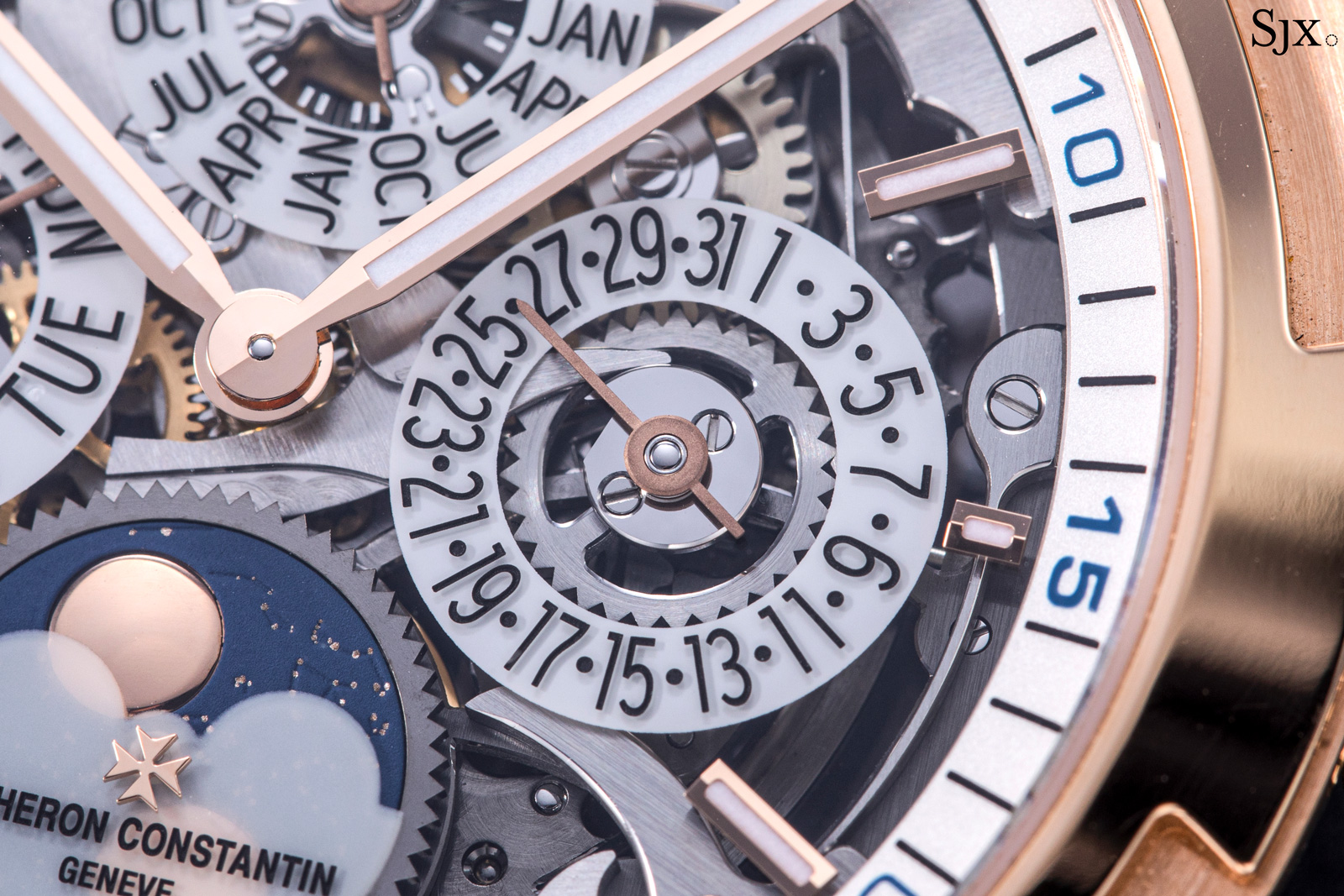
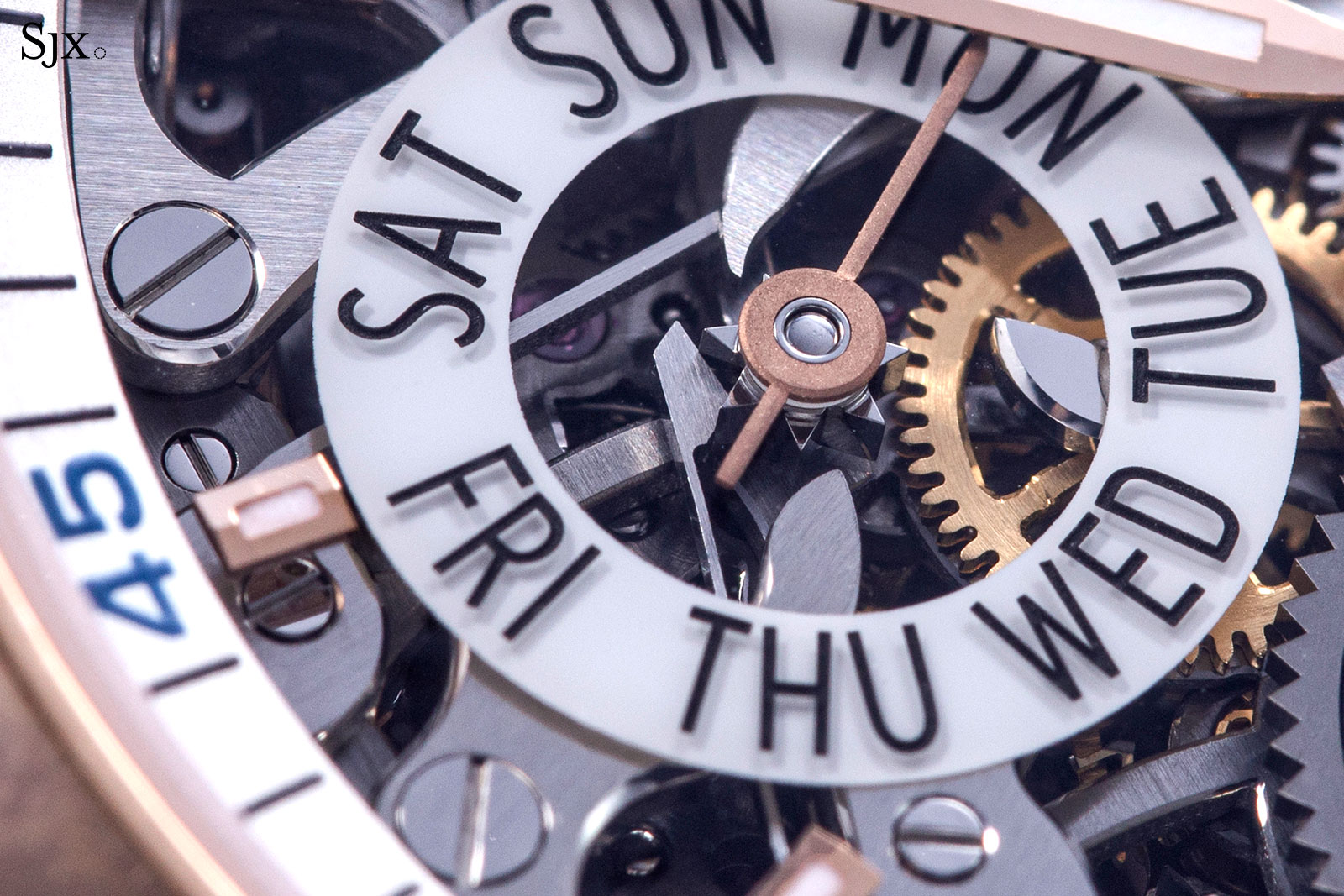
The lever and star-shaped wheel that jumps the day hand

The cam and lever that allows the date to skip the necessary days at the end of the month, including accounting for the 28-day February in leap years
The decoration of the movement is generally done as well as anything found at comparable brands, namely Patek Philippe and Audemars Piguet. There’s only one element that can be done better: none of the inward corners on the bevelled edges of the movement are sharply angled, and instead all are rounded.
The only practical downside of the movement stems from the fact that the calendar module was designed decades ago, which means it operates like other old-school calendar mechanisms.
All the calendar indications are adjusted via pushers on the case sides, meaning a stylus is needed. At the same time, the calendar cannot be set within a few hours before and after the date change at midnight, and doing so might break something.
In essence, it is slightly tedious to set the calendar – but that holds true for practically all high-end perpetual calendars, save for a handful of innovative constructions like the Ulysse Nardin Perpetual Ludwig or H. Moser & Cie. Perpetual Calendar.
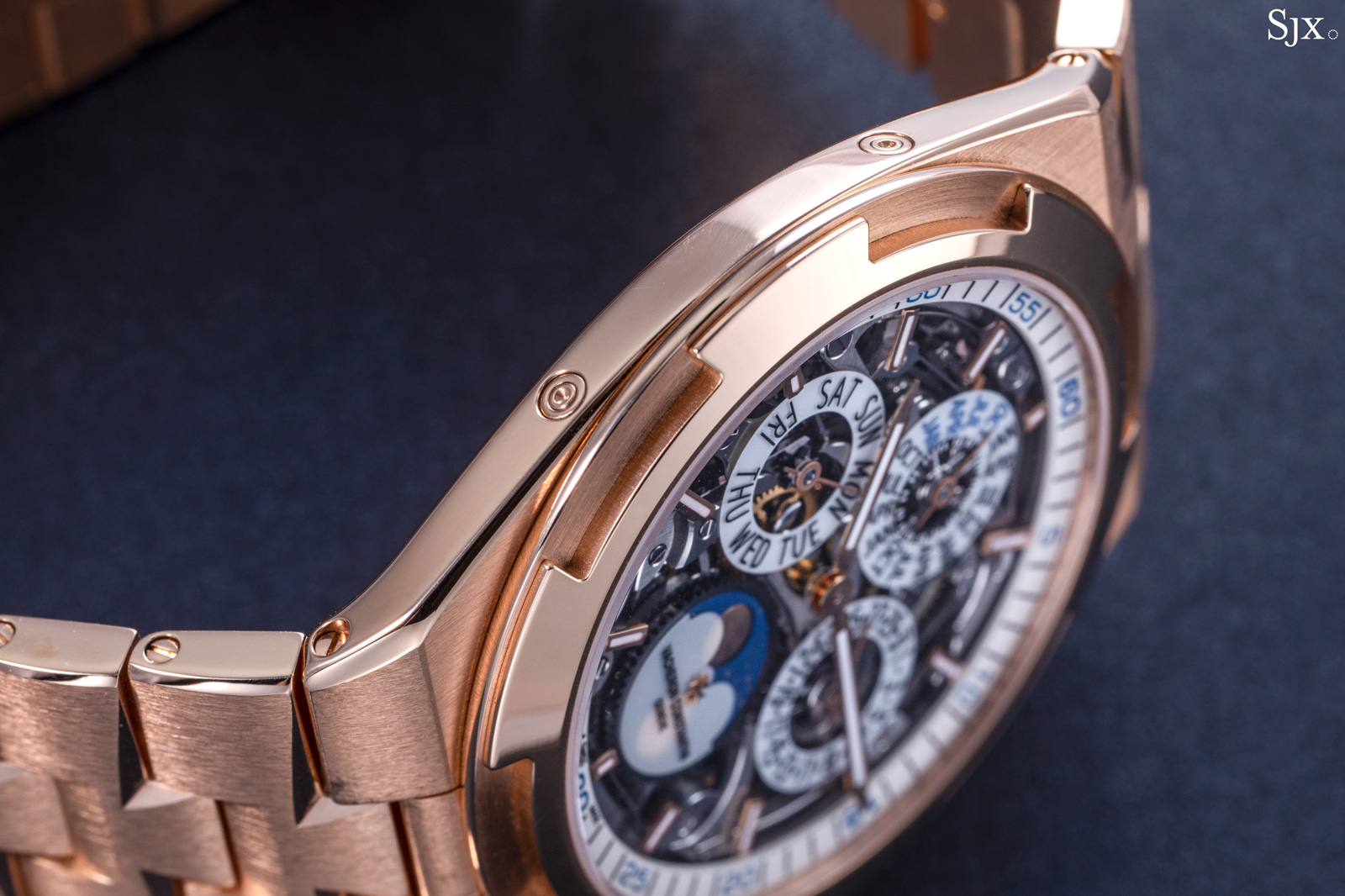
The case has four recessed pushers on its sides for the calendar
The Overseas case
Done as well as the movement, the case and bracelet are the best iteration of the Overseas design to date. The bezel retains the signature bottle cap notches found on the original Overseas, which was in turn modelled on the 222, but much of the rest of the design has been subtly tweaked.
For one, the case has a different shape and profile. While earlier generations of the Overseas were round, this has a gentle barrel shape, giving it a bit of a 1970s look. At the same time, the sides of the case rise outwards towards the bezel, giving the Overseas a larger face than back. It accentuates the size, which is a good thing for a thin sports watch, while also making it appear slimmer. A key element retained the second generation Overseas is the bracelet, which is made up of links that form a partial Maltese cross, the brand’s logo.
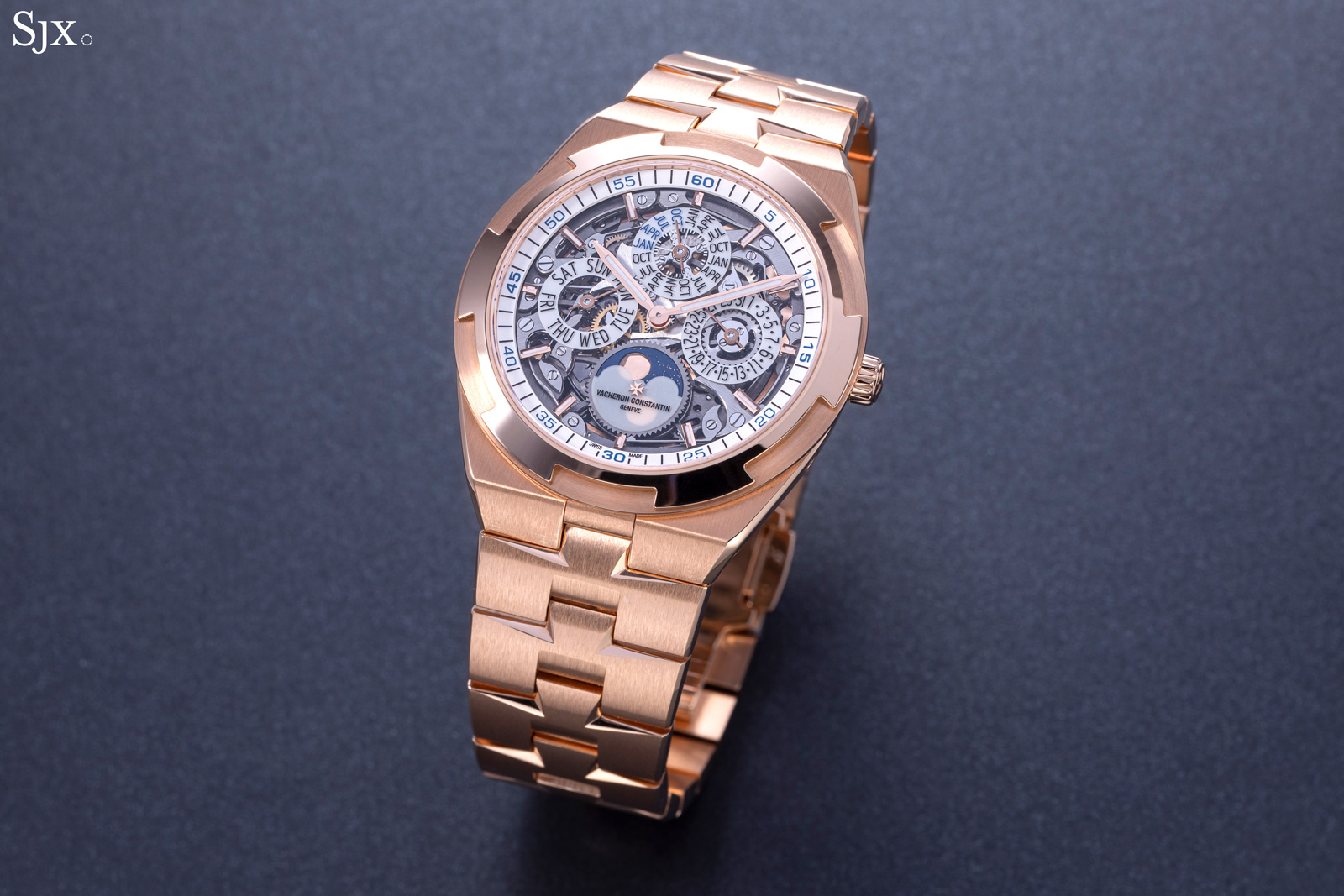
All of the surfaces of the case are finished well, even those that are barely visible. Most of the case has a brushed finish that’s highlights by polished bevels. The front of the bezel is polished, but the vertical flanks of its notches are brushed. And each bracelet link is mostly brushed, but the inner faces are polished.
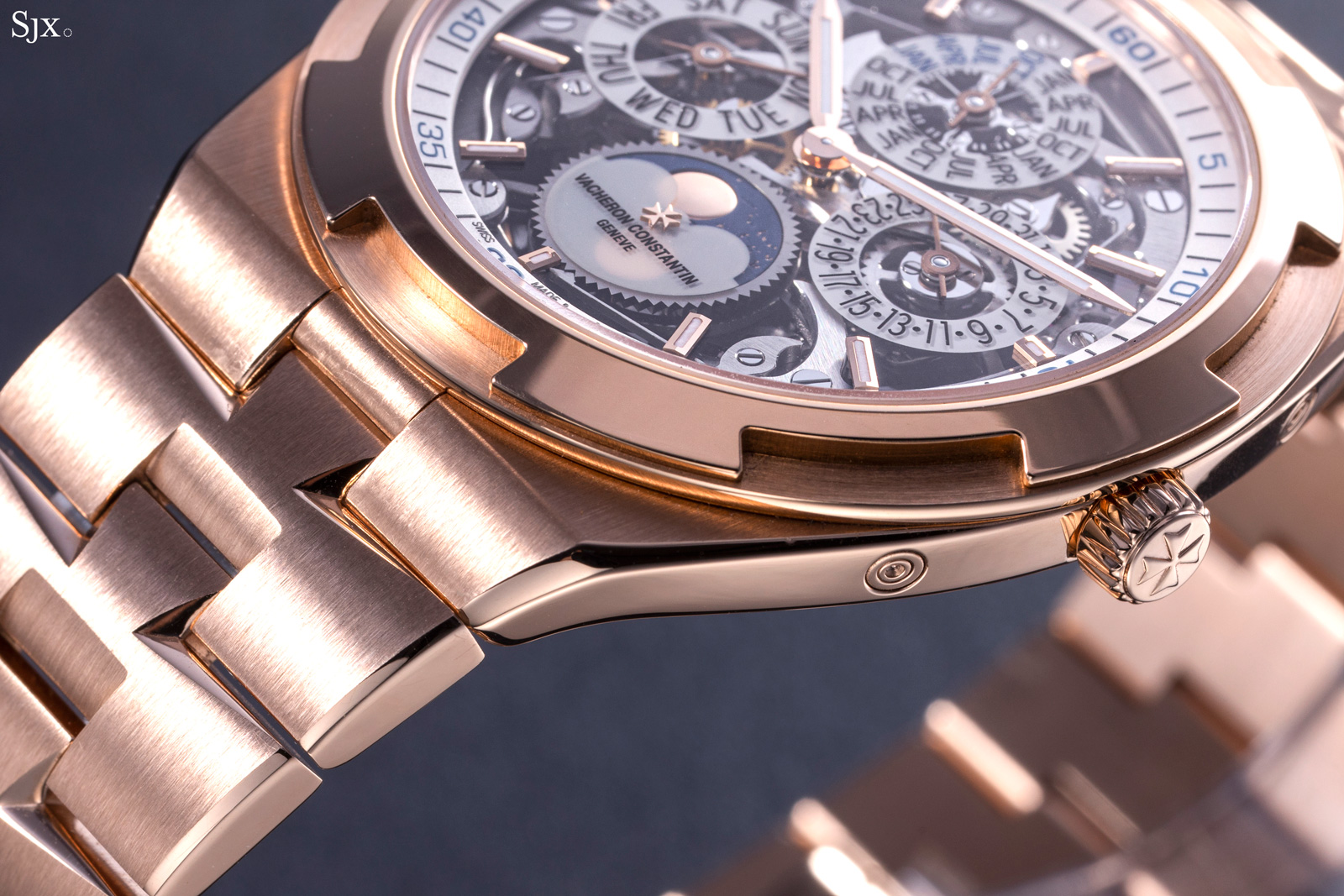
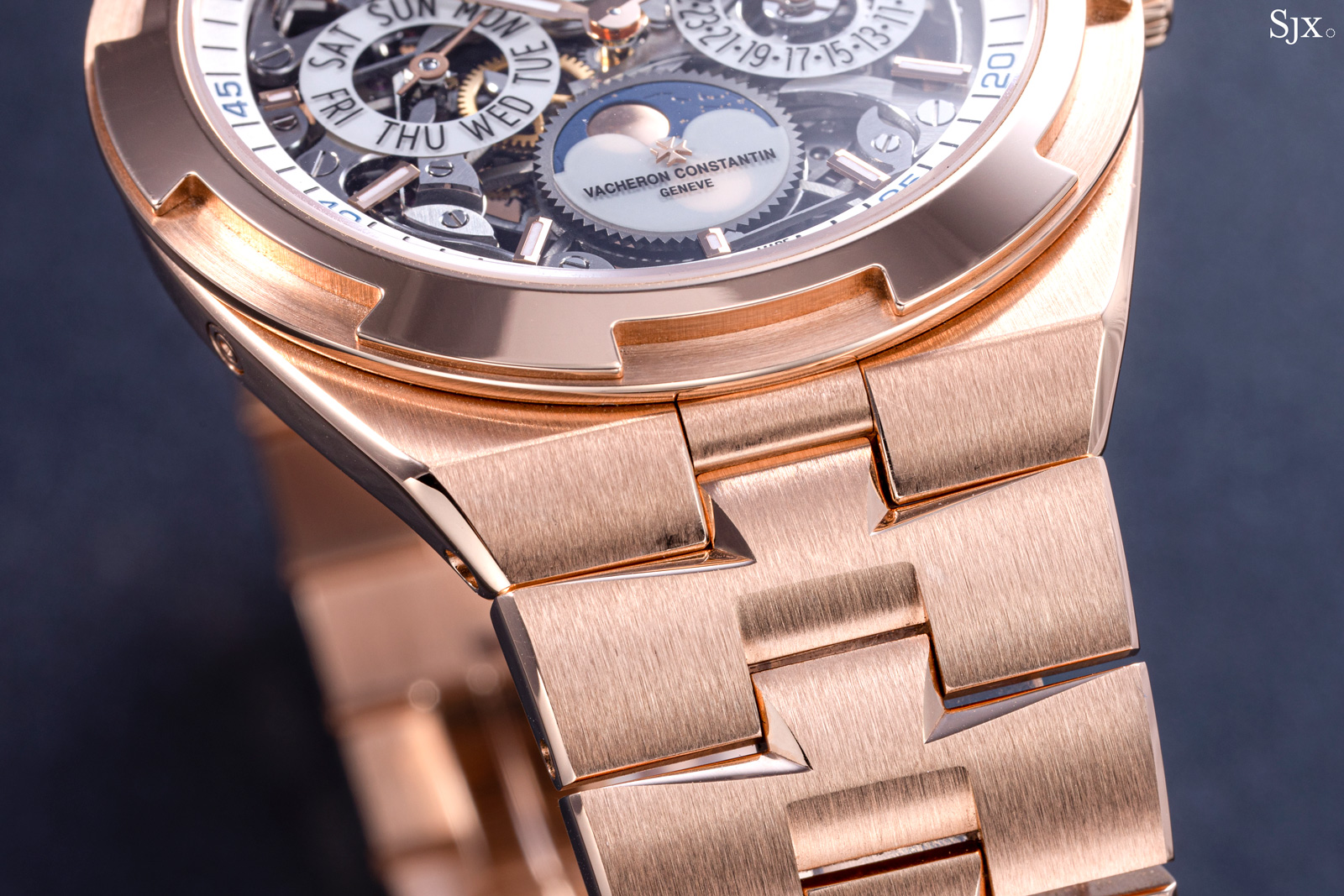
Designed such that its lines flow into the case, the bracelet is thin enough to suit the case, but substantial enough that it feels like an expensively made bracelet. But importantly, the bracelet is not just fine, but also practical.
Worth noting is the convenient quick-adjustment system for swapping the bracelet for a strap, or vice versa, a feature not found on either of its peers. A tab on the back of both the strap and bracelet releases it from the lug, allowing it to be replaced in under a minute. For that reason, the watch is delivered with two additional straps in alligator and blue rubber, along with a folding clasp featuring its own quick-release mechanism that allows for easy interchangeability between the straps.
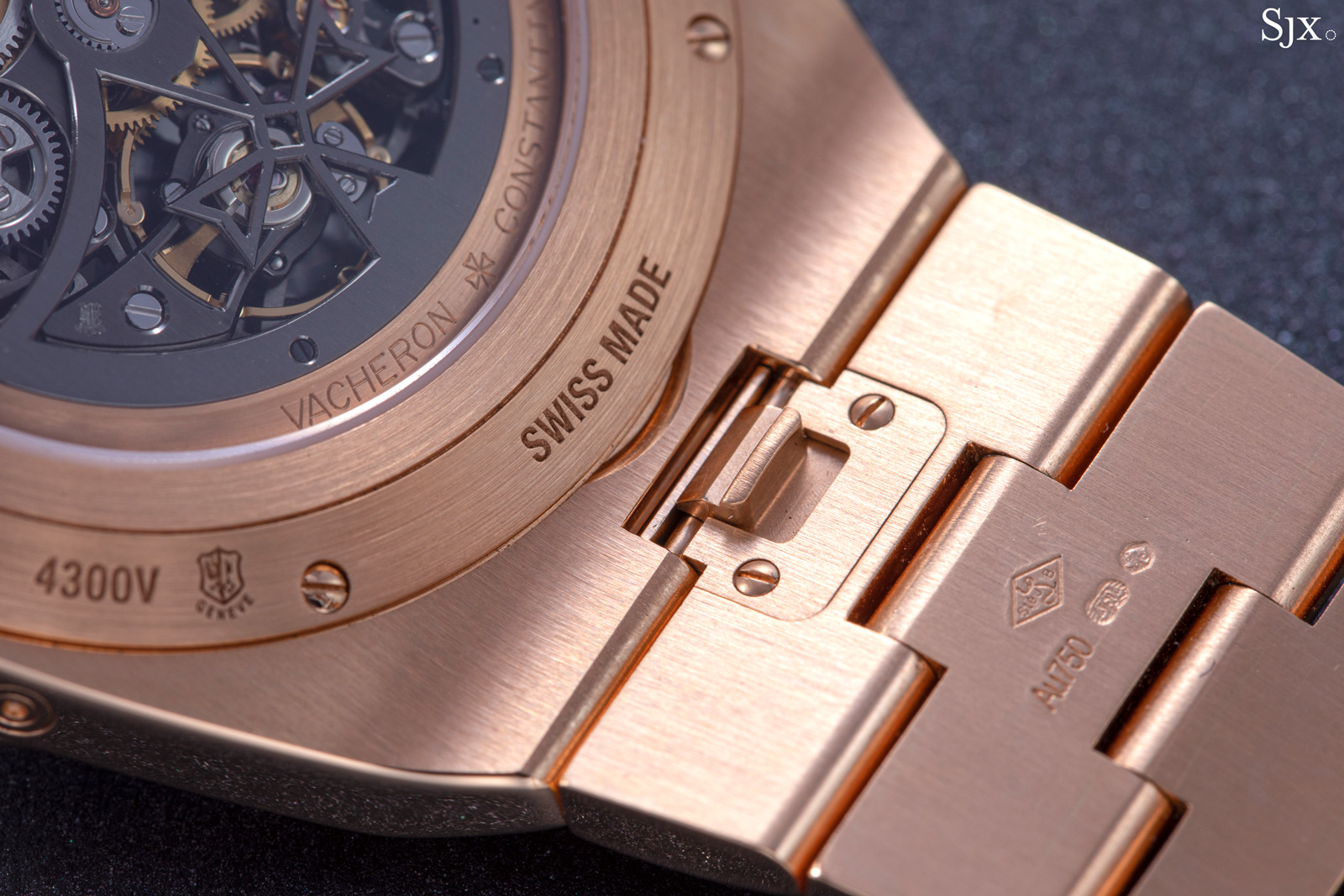
The tab for removing the bracelet
On the Overseas (and its rivals), the quick-release mechanism makes more sense than on most other designs. Such Proprietary quick-release mechanisms limit the choice of straps to the stock offerings, which is a hassle particularly for watches with standard lugs. But on the Overseas, or any other integrated-bracelet sports watch, it makes sense, since the watch is conceived to have an integrated bracelet to begin with.
Lastly, the bracelet has micro-adjustment mechanism that allows for an extension of up to 2 mm on each side of the clasp, which should make it possible for anyone to get a perfect fit, while also accommodating for changing wrist sizes as seasons or temperatures change.
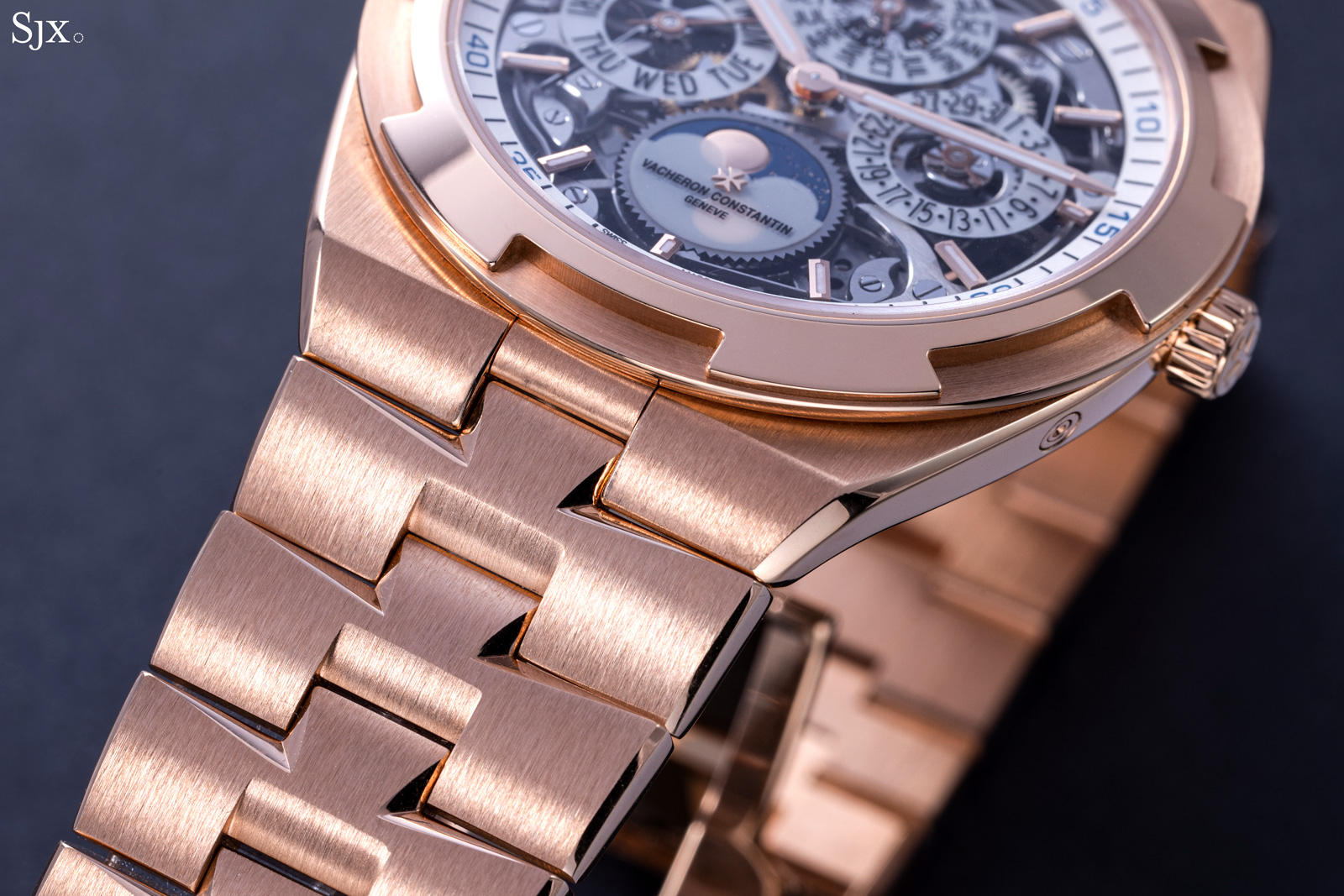
The quick-release mechanism is invisible and doesn’t take away from the visual integration of the bracelet
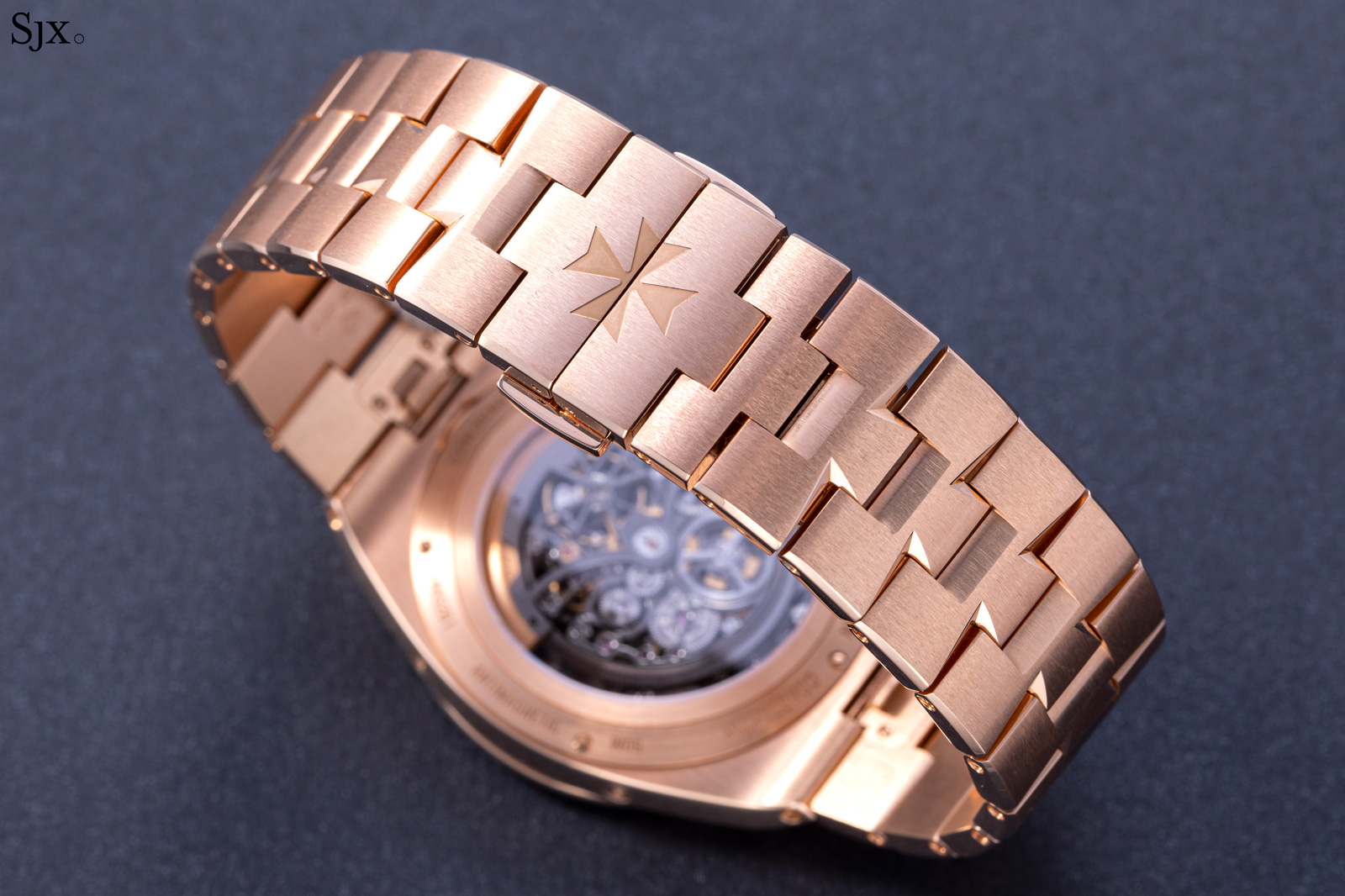
The micro-extensions are hidden on either side of the clasp
Concluding thoughts
The Overseas perpetual calendar is a beautifully executed watch that is done very well, in both design and execution. While not perfect, there’s very little that could be feasibly improved. Admittedly, the Overseas perpetual calendar is a pricey watch, and even more so in its skeleton form, but it costs what such watches do, and it’s arguably worth it.
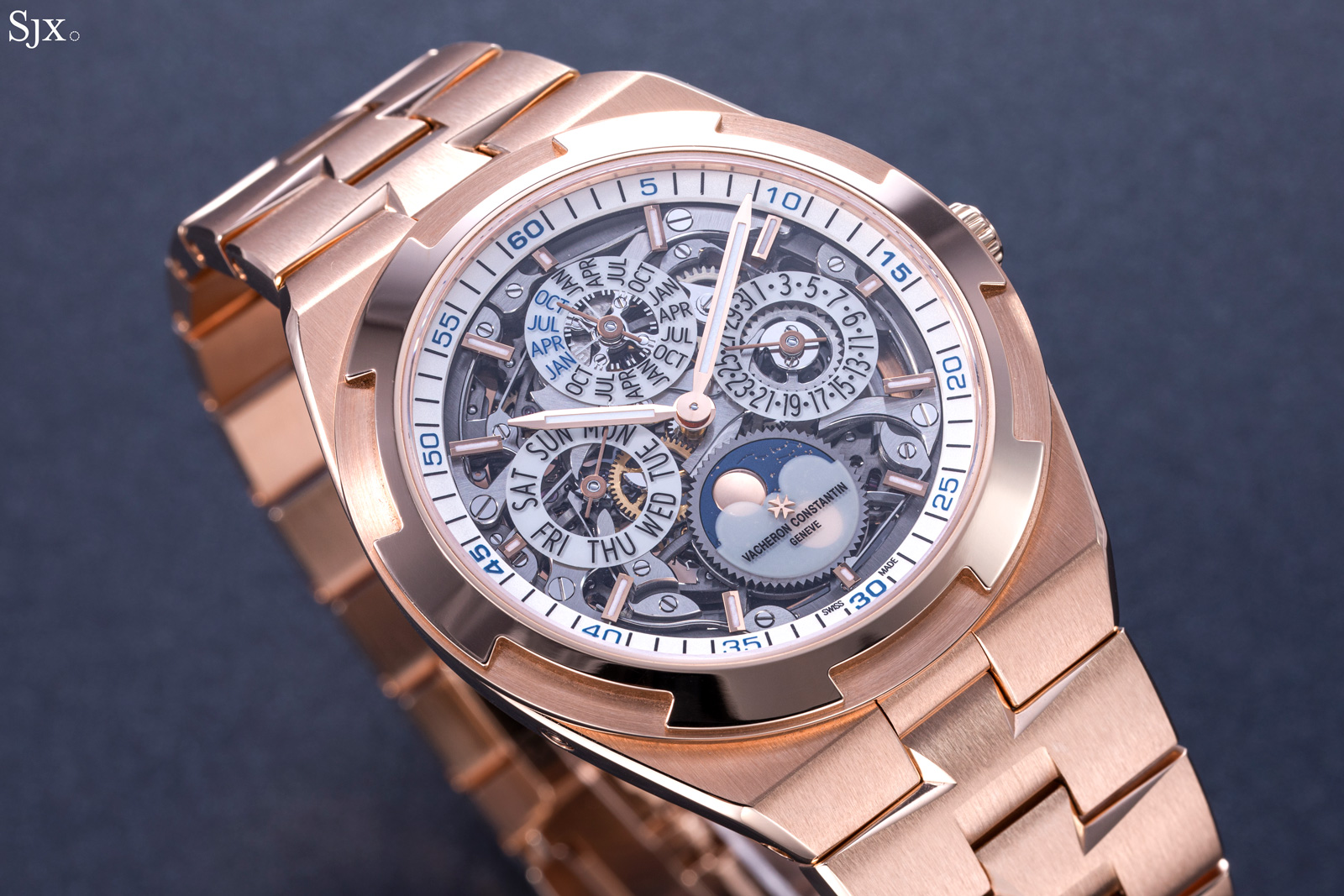
Key facts and price
Vacheron Constantin Overseas Ultra-Thin Perpetual Calendar Skeleton
Ref. 4300V/120R-B547
Diameter: 41.5 mm
Height: 8.1 mm
Material: Pink gold
Water resistance: 50 m
Movement: Cal. 1120 QPSQ/1
Functions: Hours and minutes; perpetual calendar with moon phase
Winding: Automatic
Frequency: 19,800 beats per hour (2.75 Hz)
Power reserve: 40 hours
Strap: 18k gold bracelet, additional alligator as well as blue rubber straps
Availability: Now at boutiques and retailers
Price: US$121,000; or 187,000 Singapore dollars
For more information, visit Vacheron-constantin.com.
Correction December 13, 2020: The calendar module is by Dubois-Depraz, and not HDG as stated in an earlier version of the article.
Back to top.